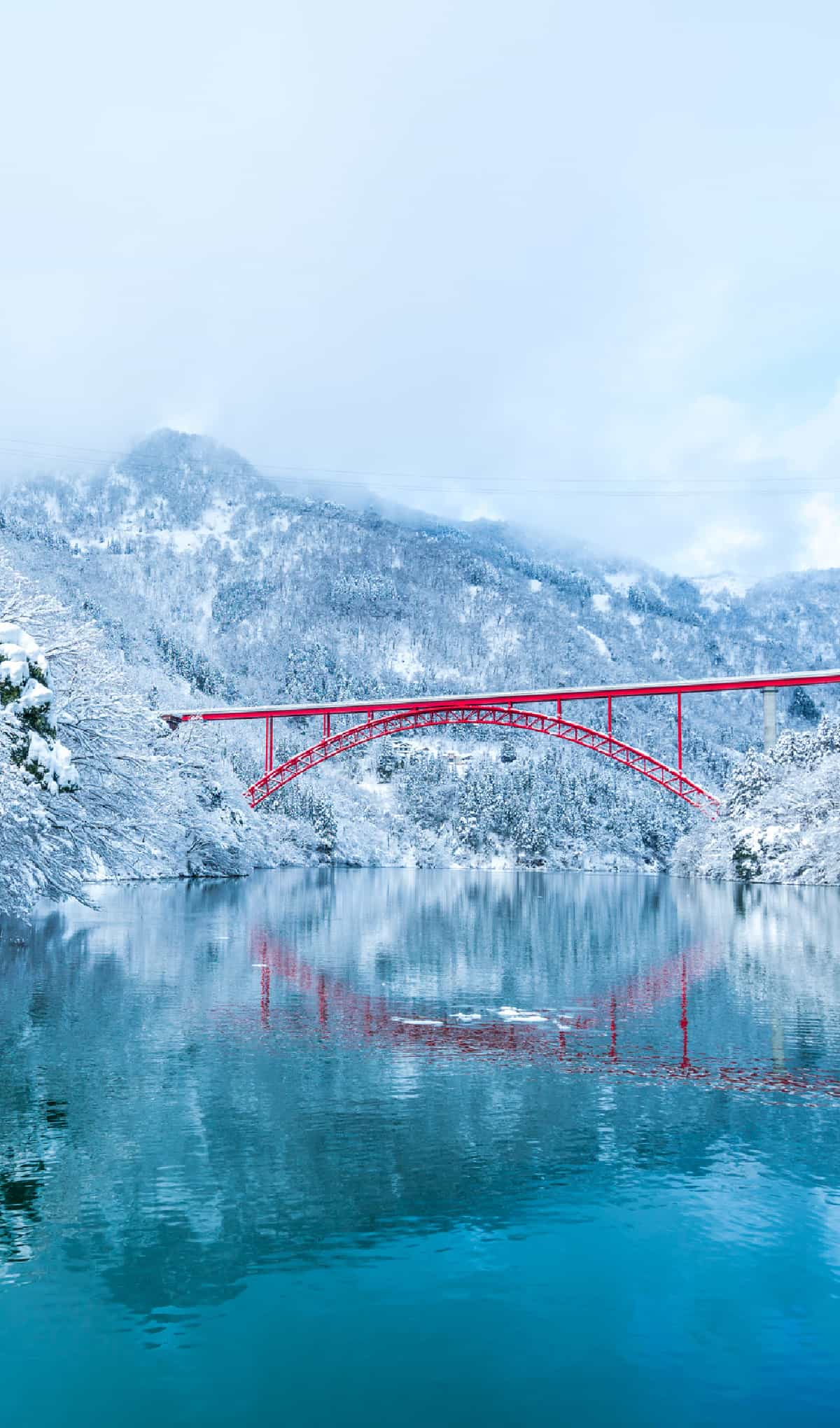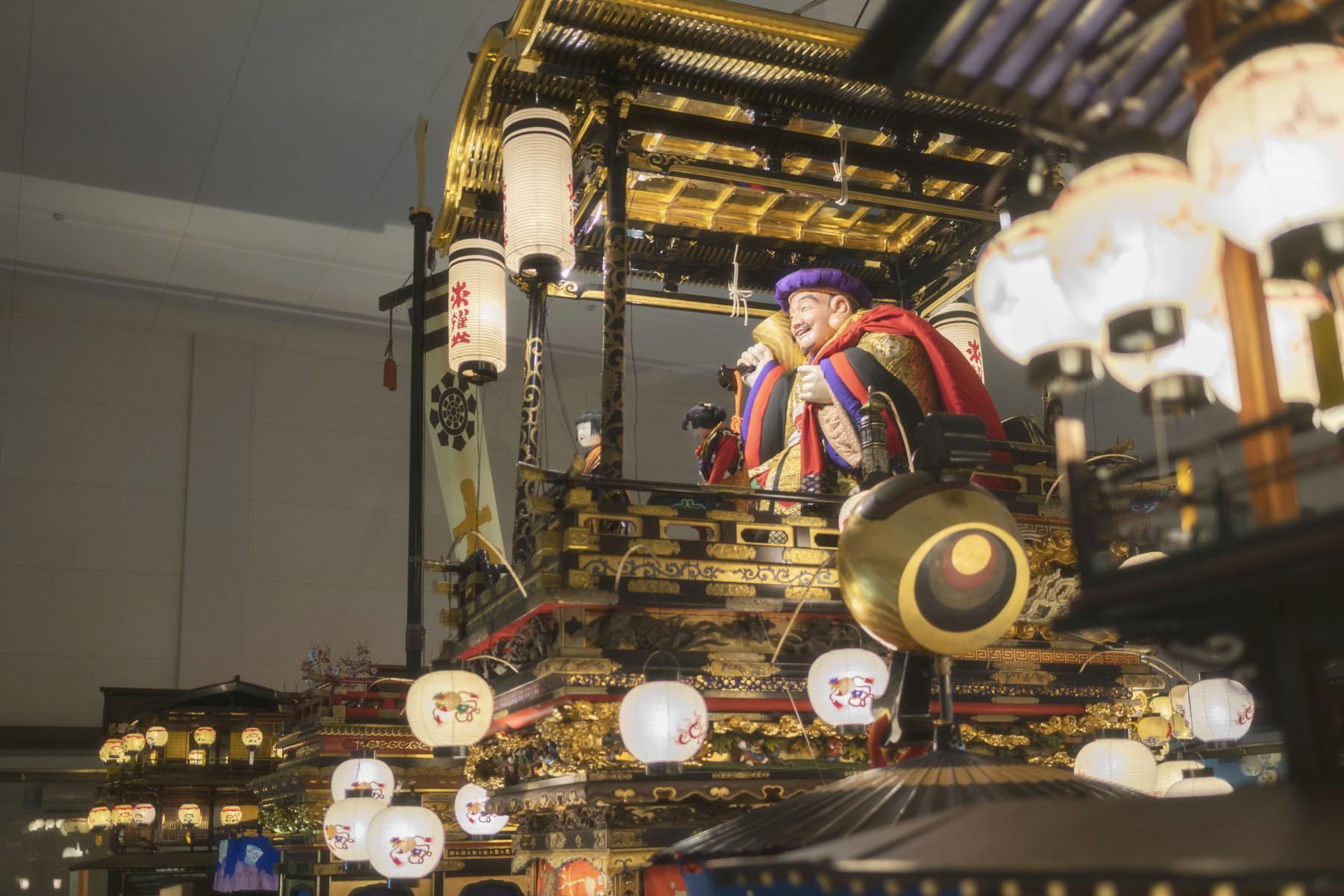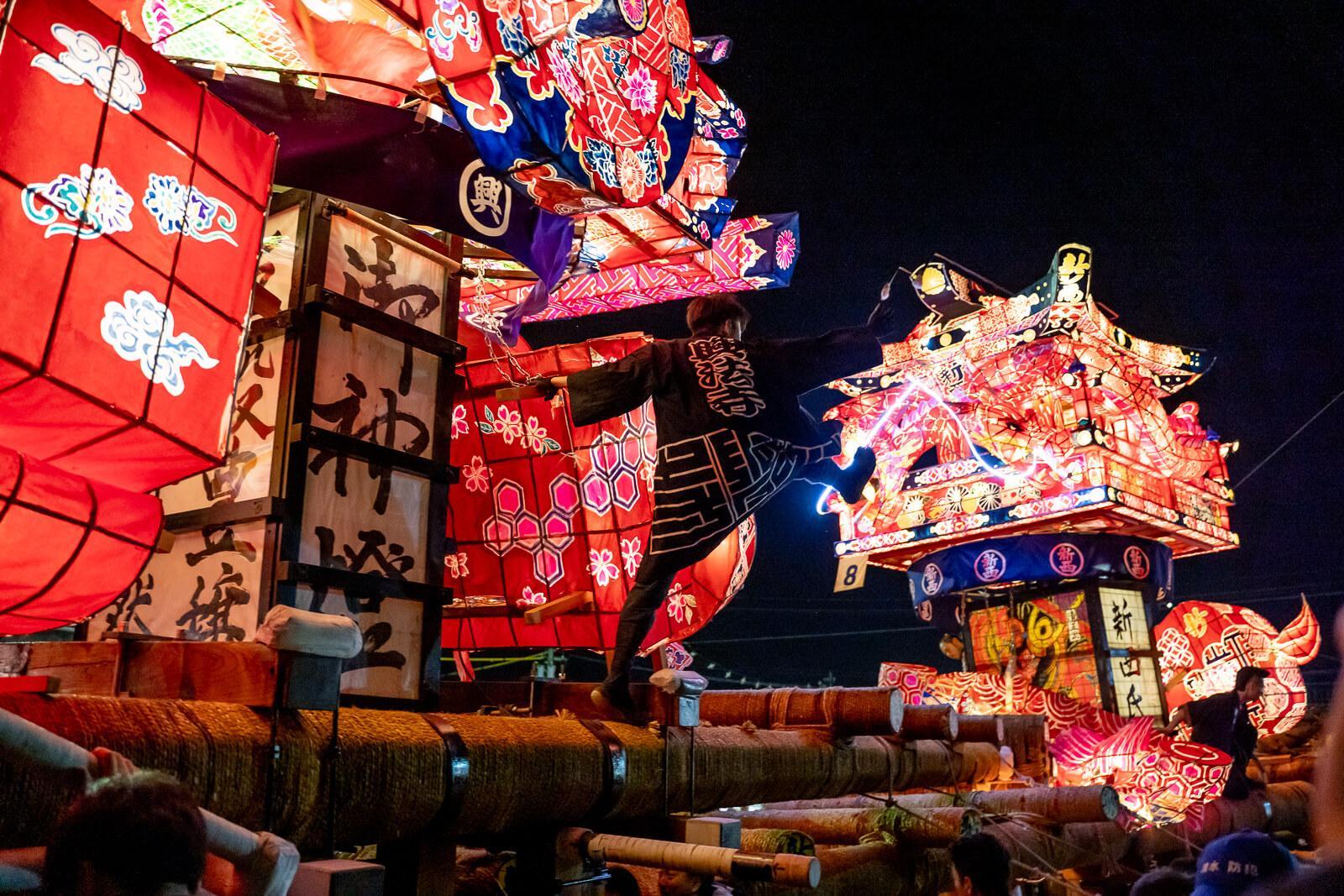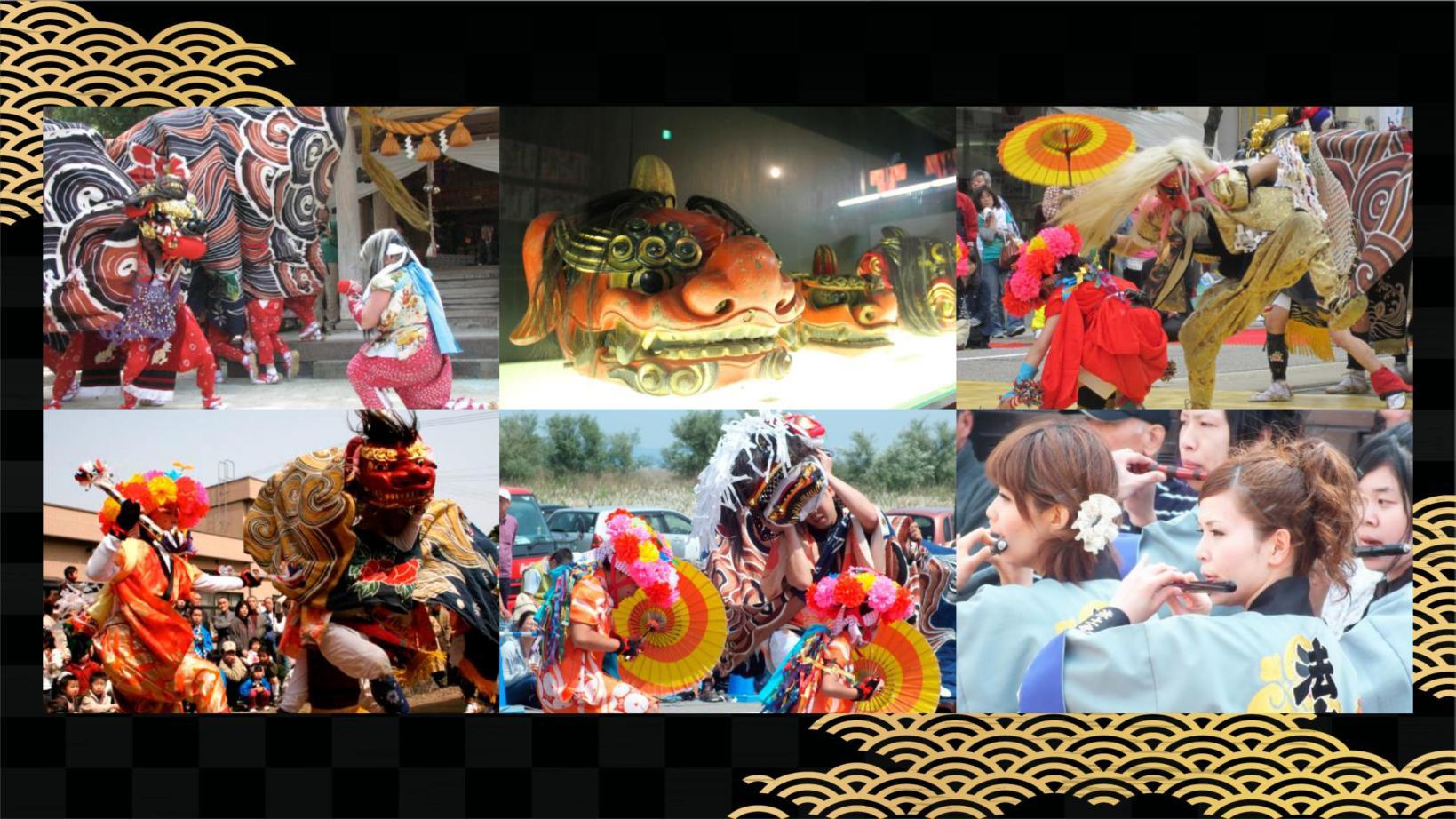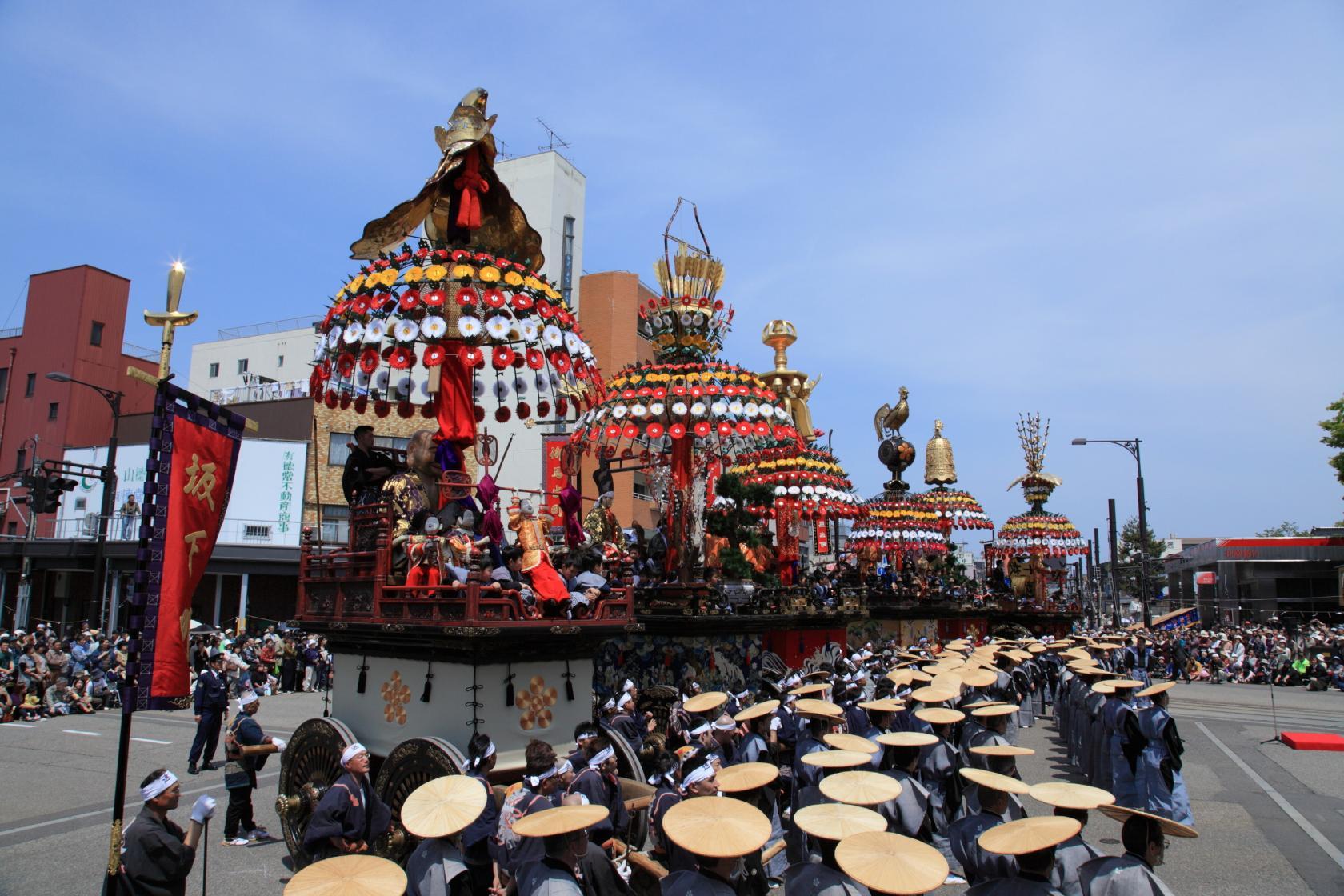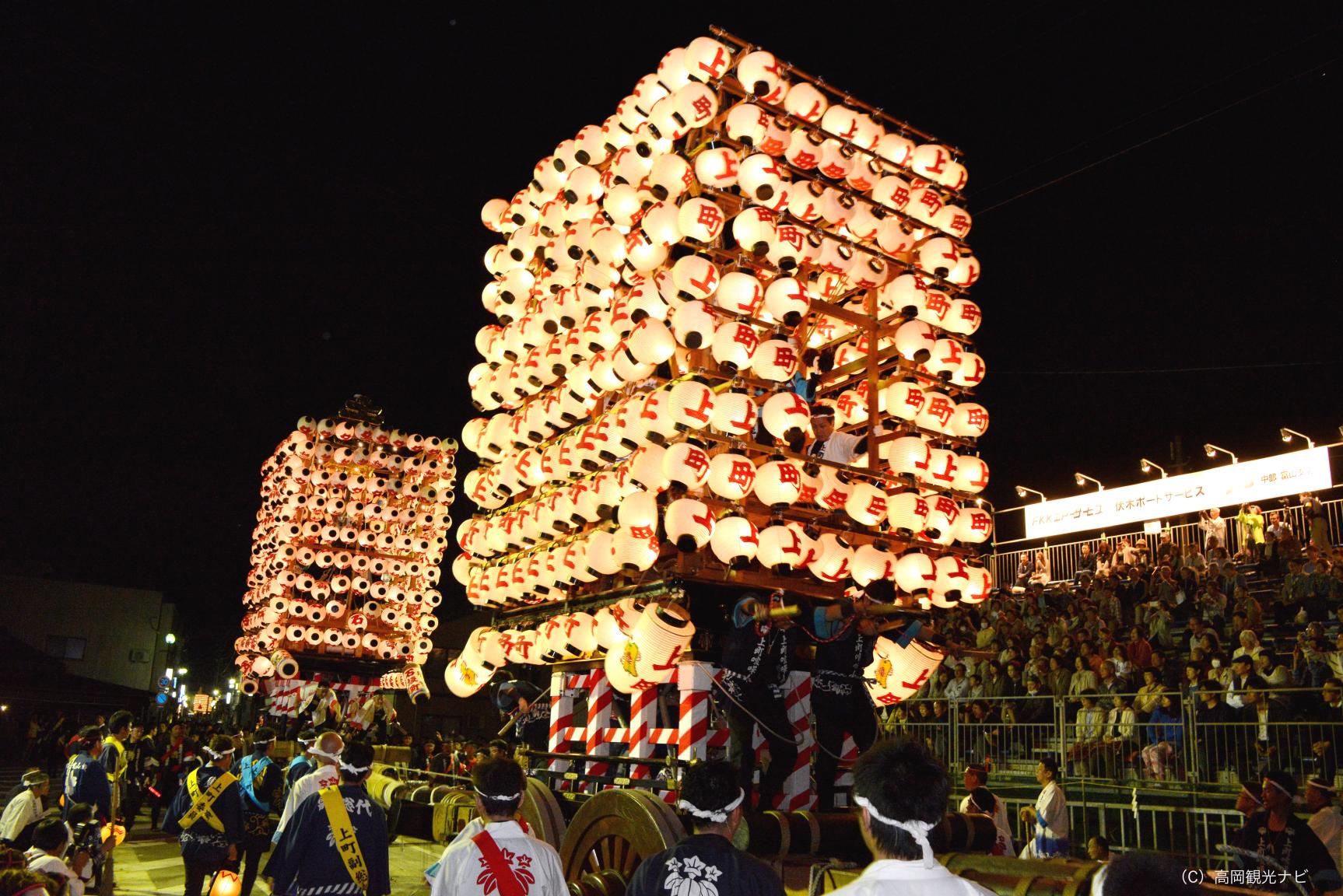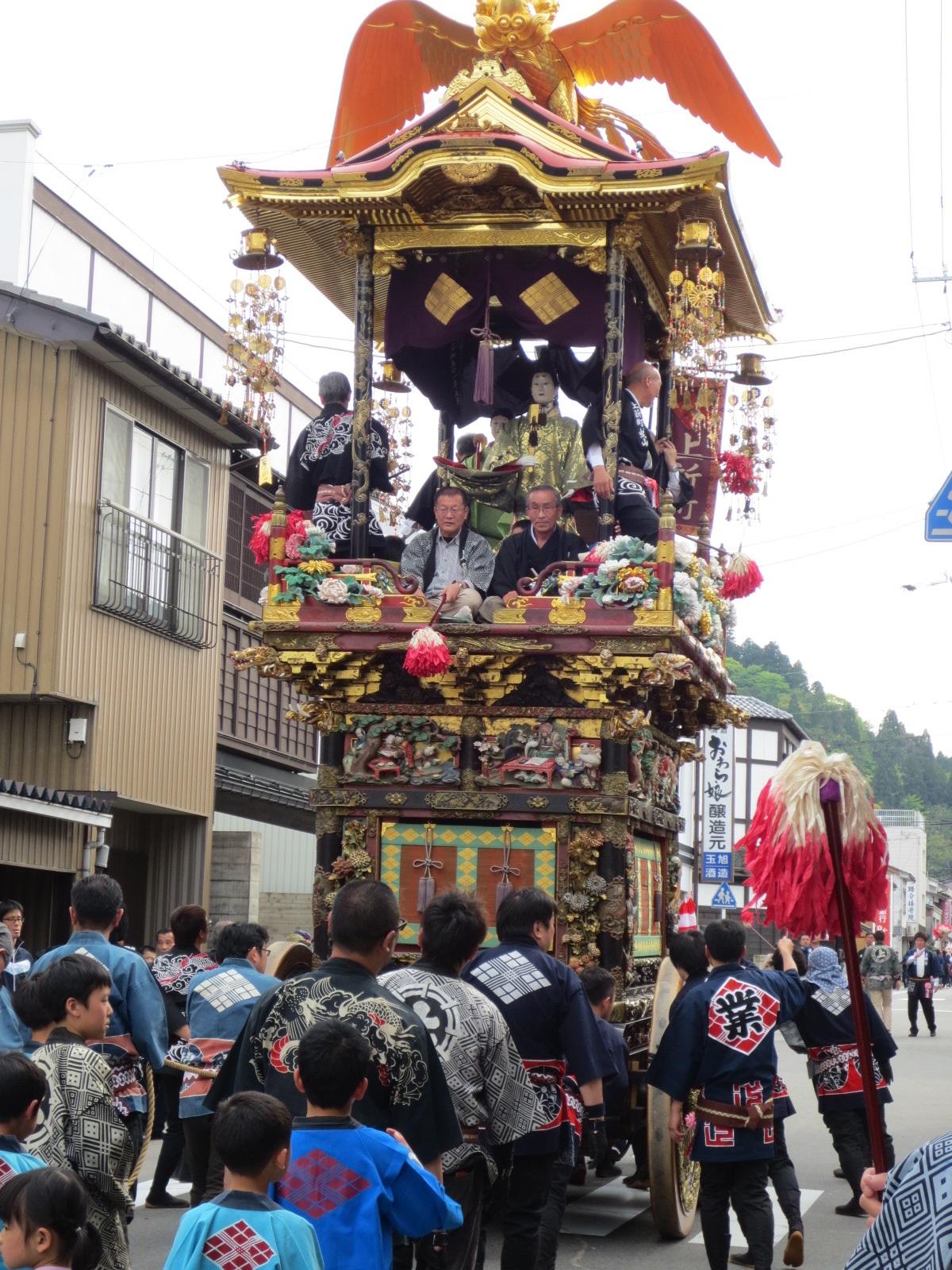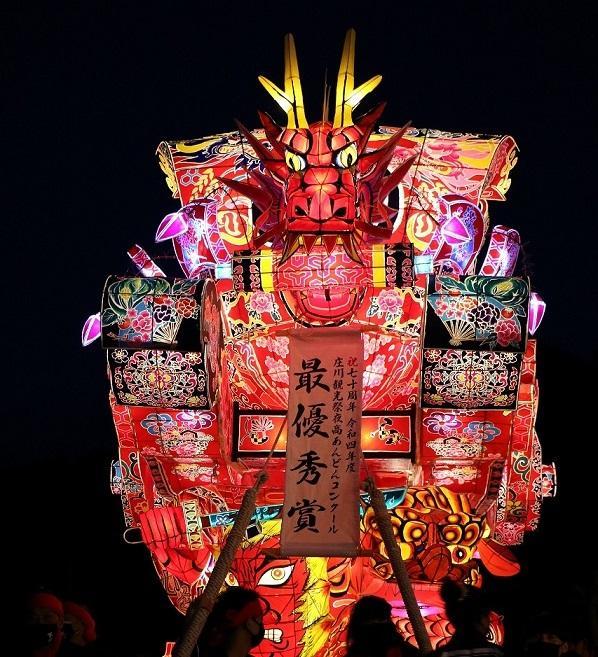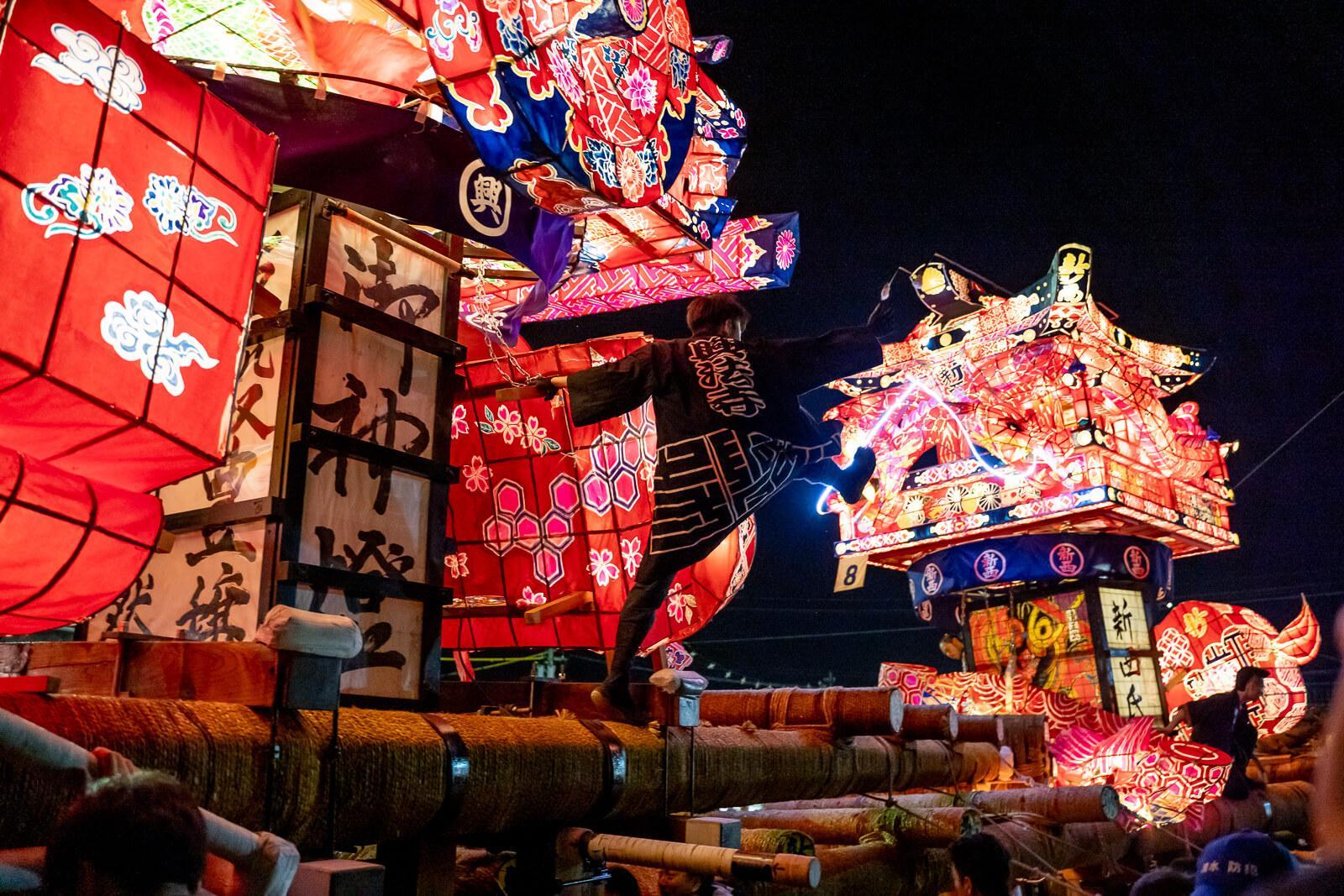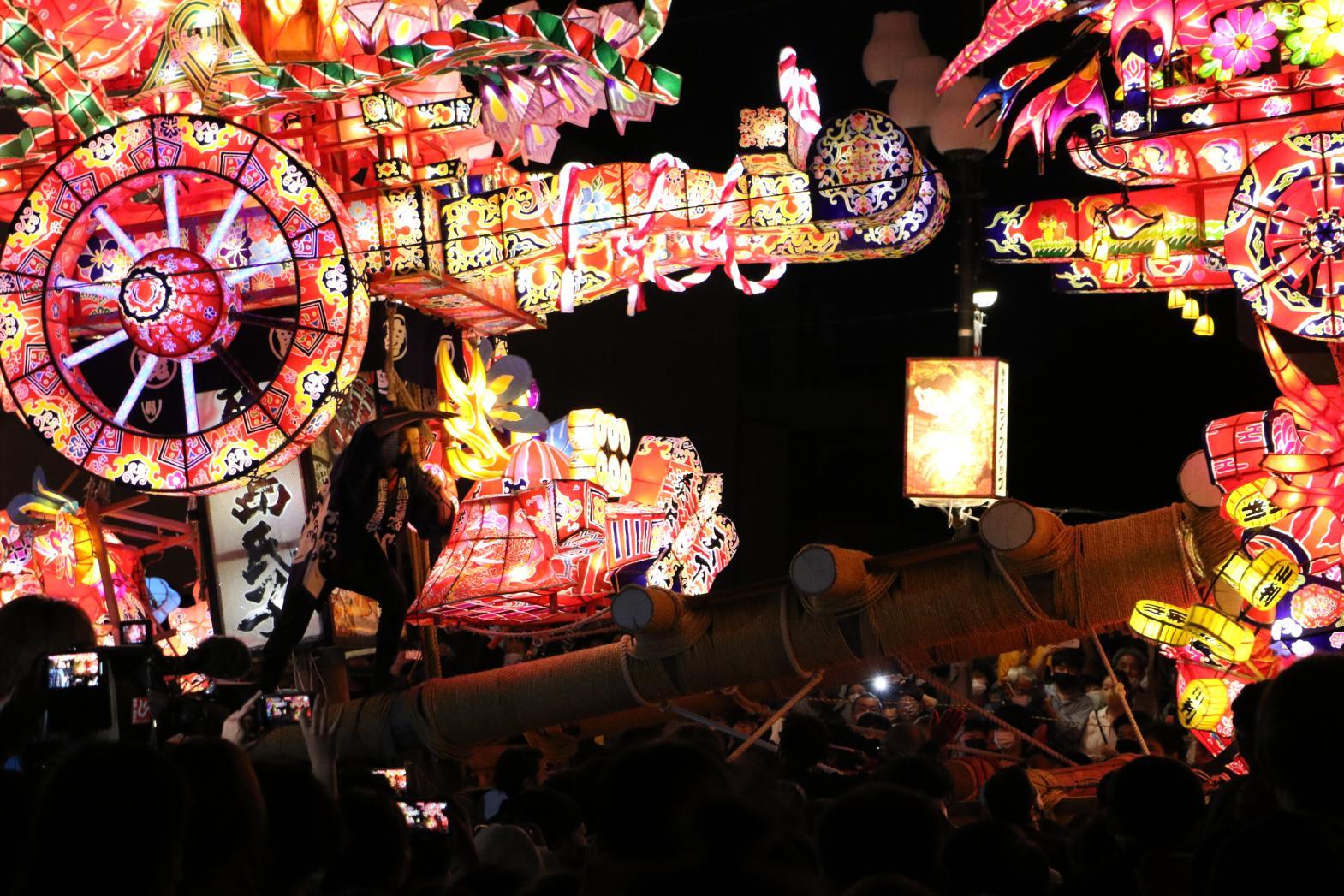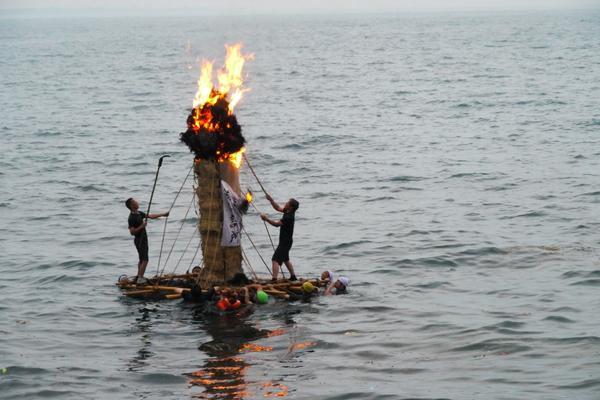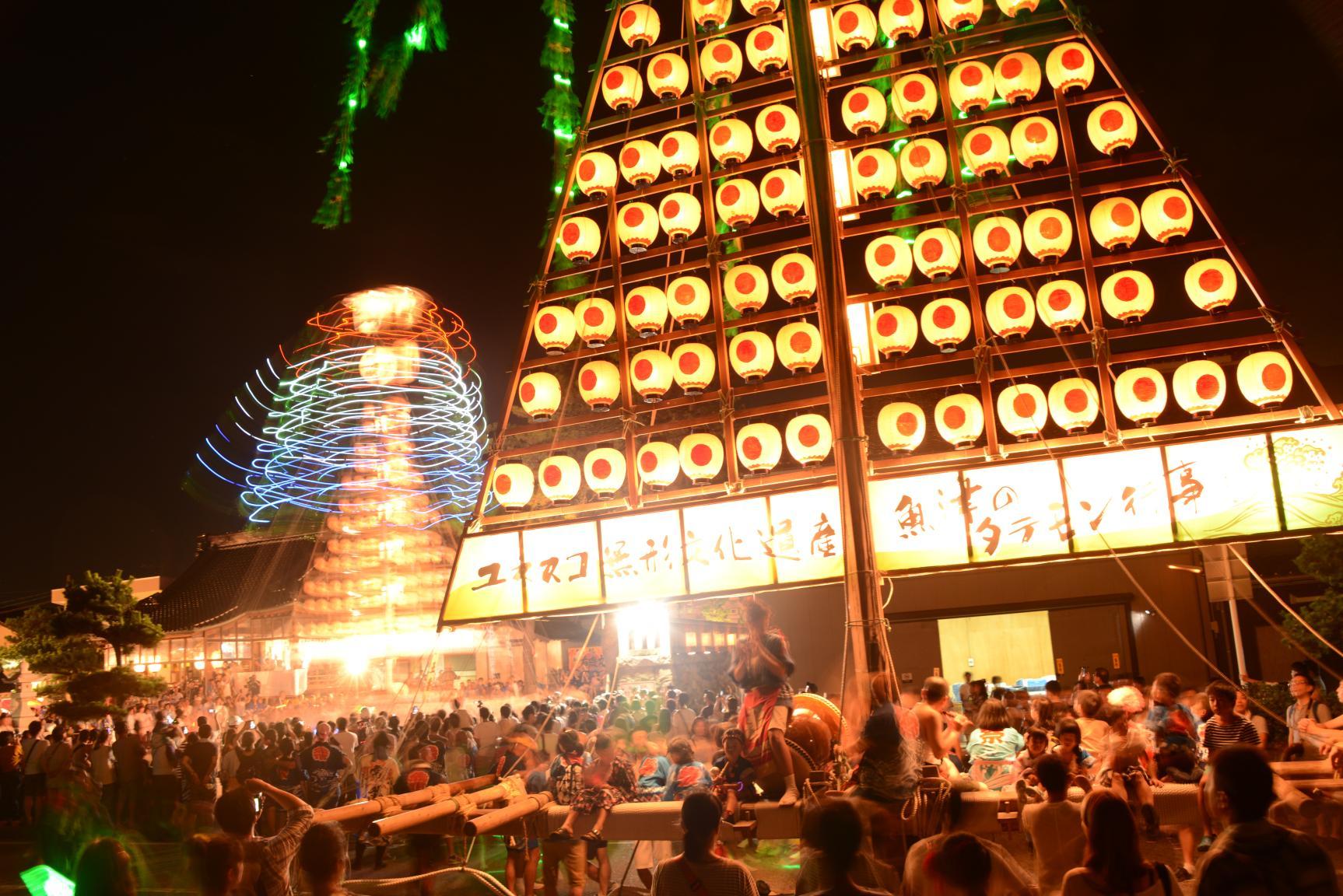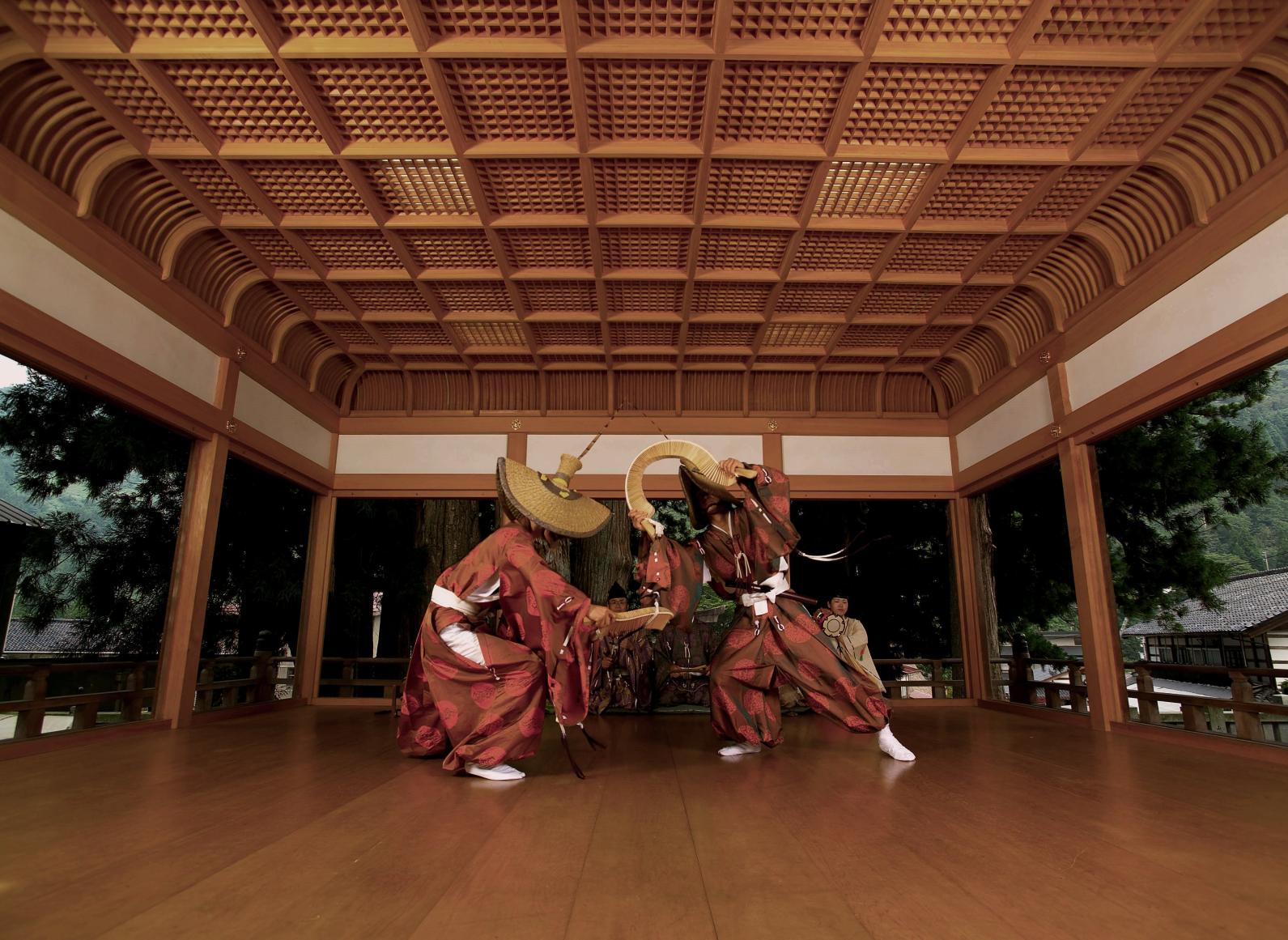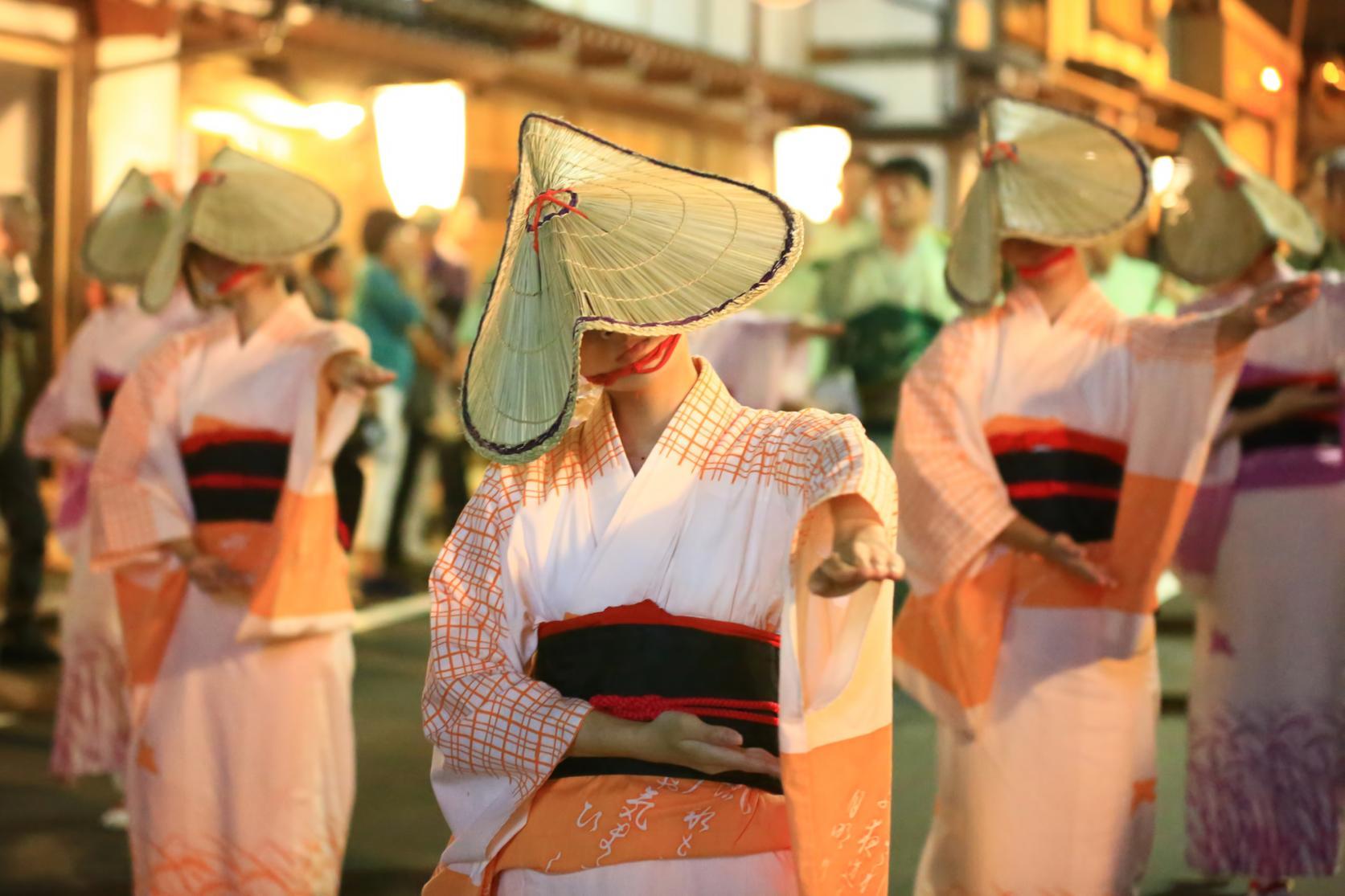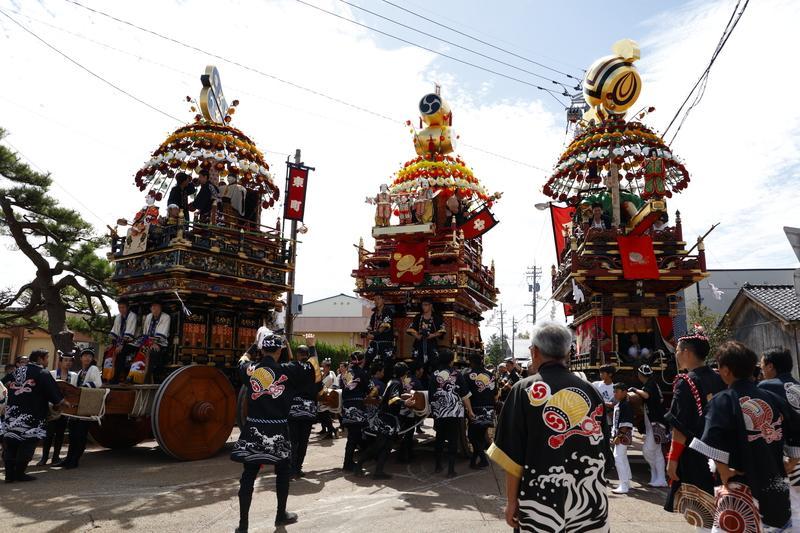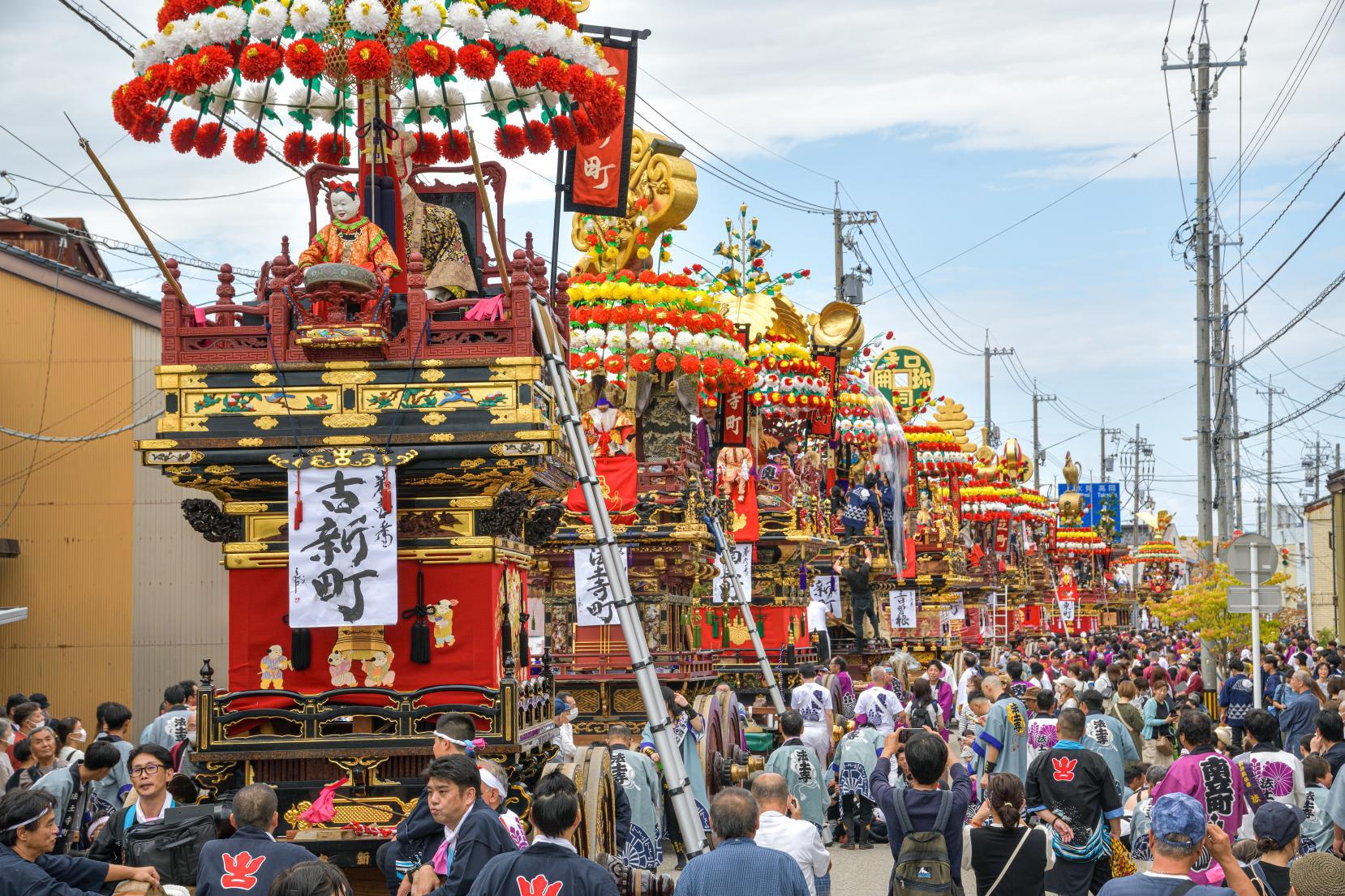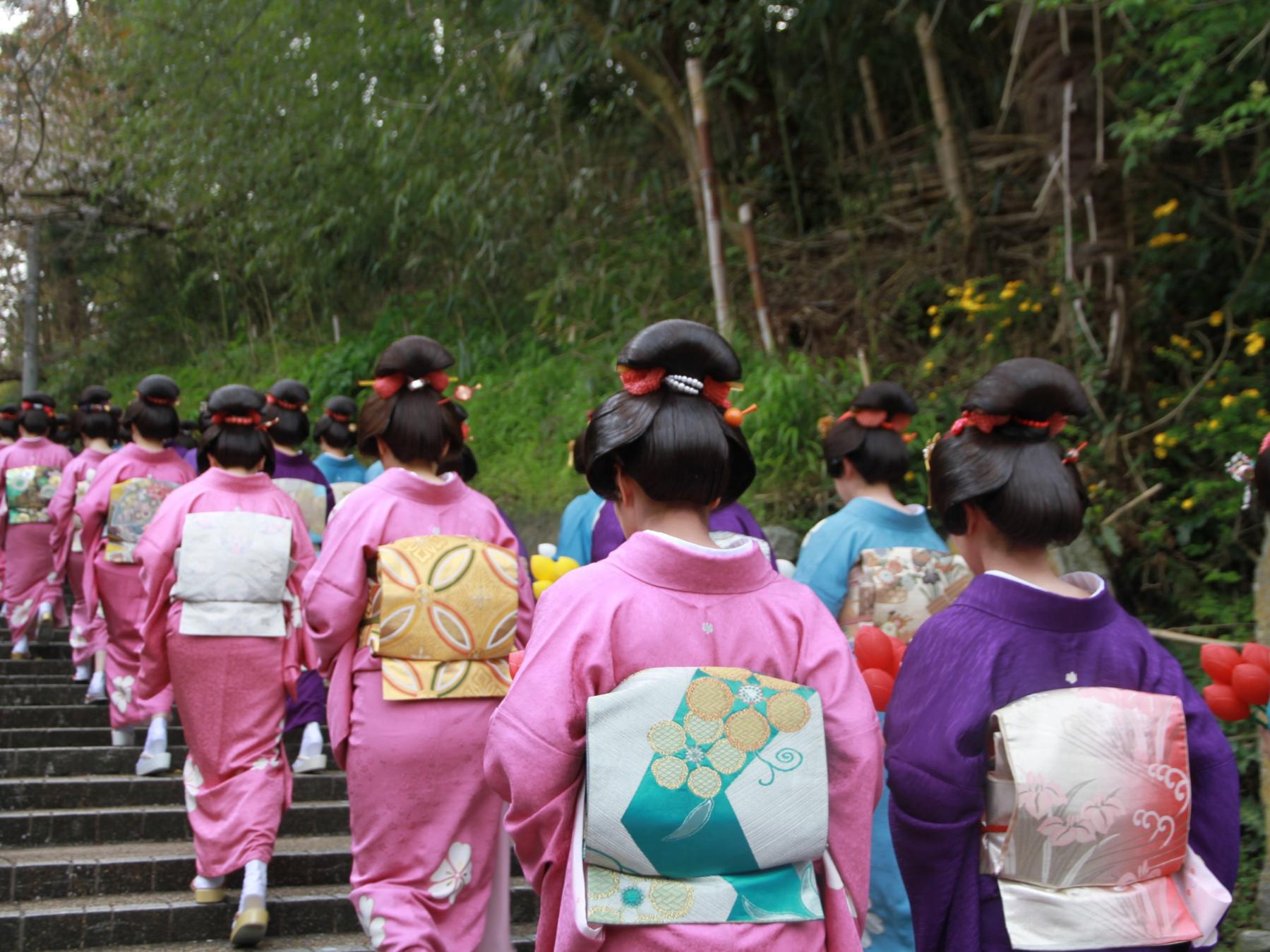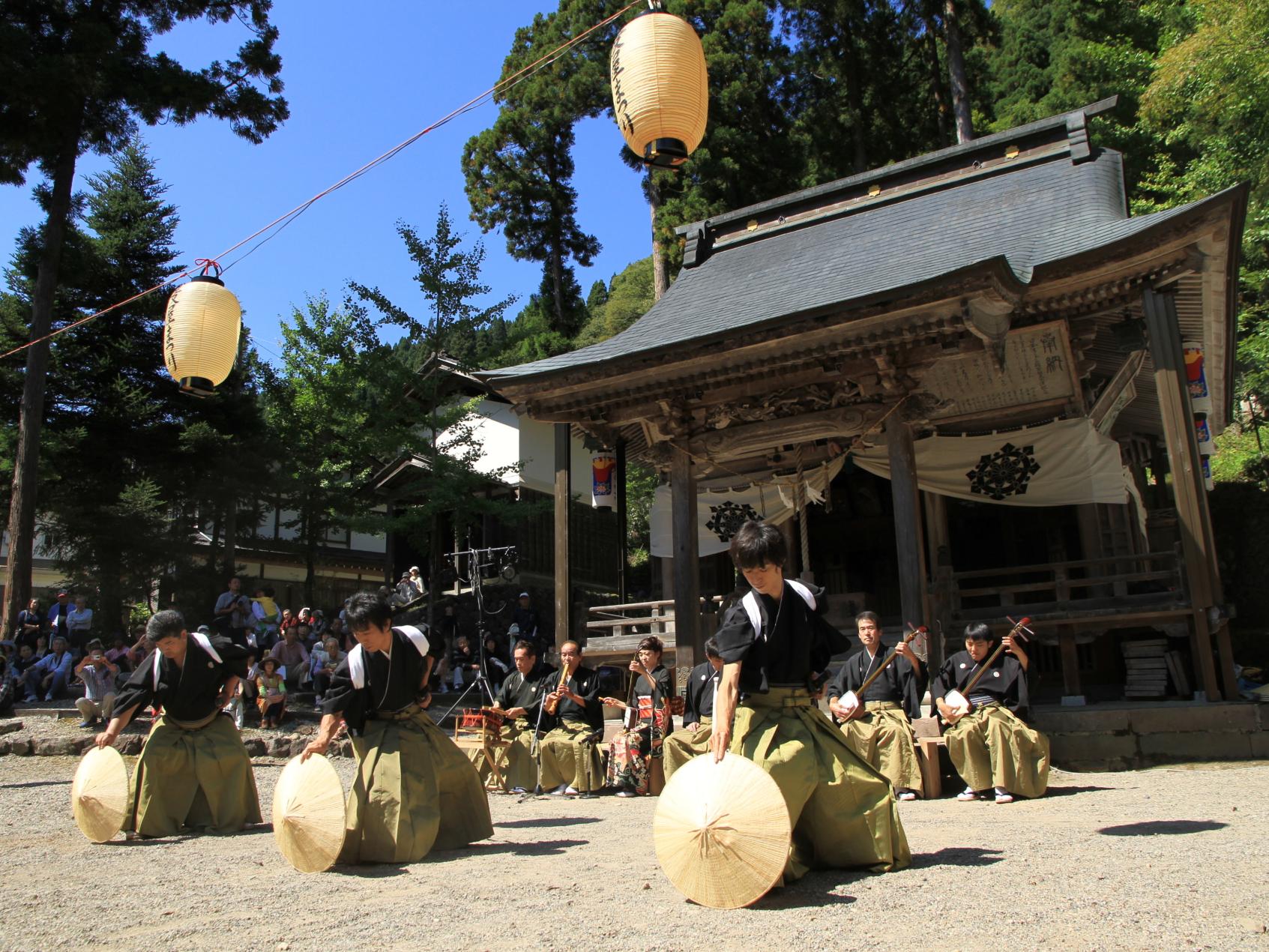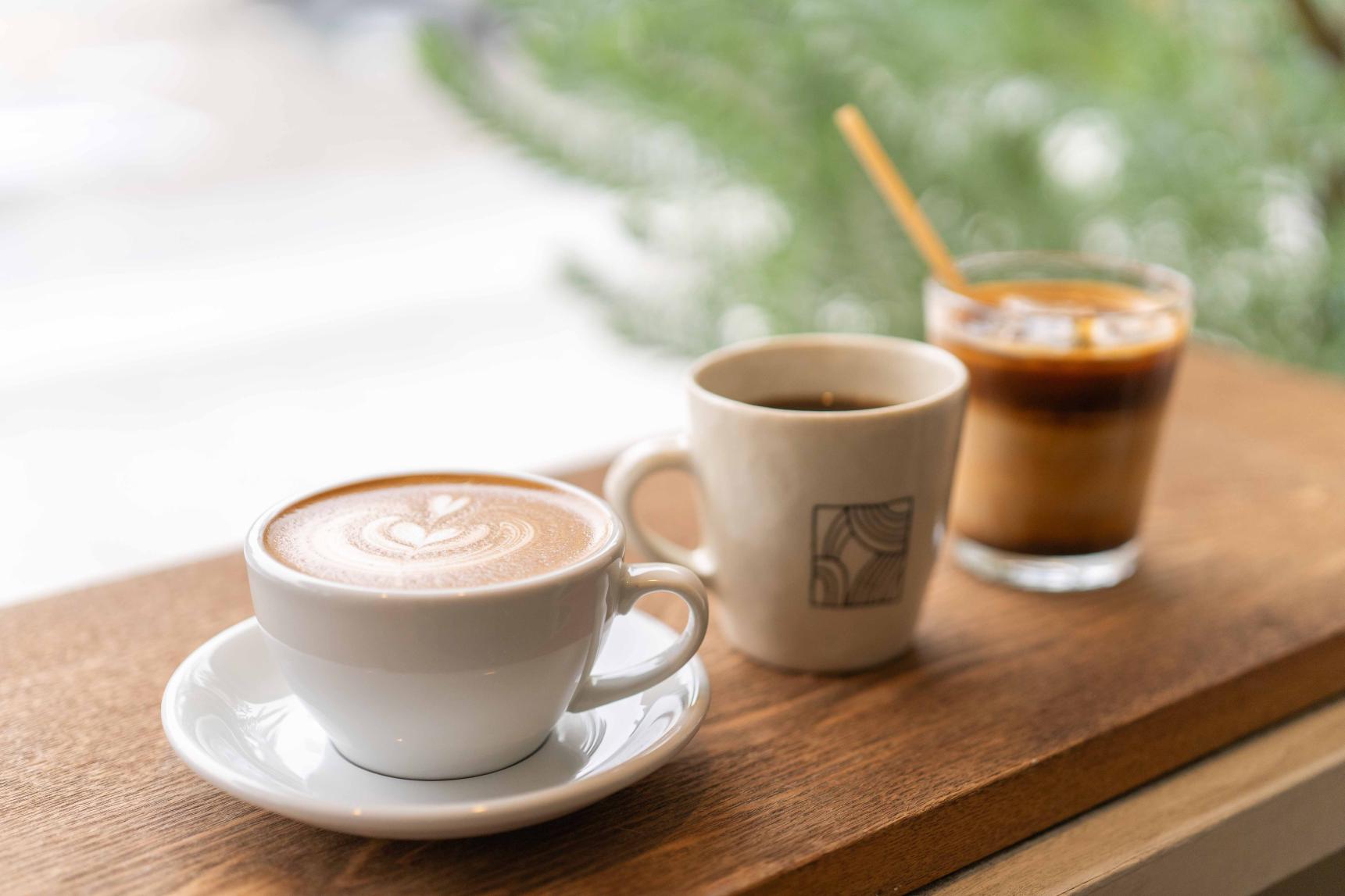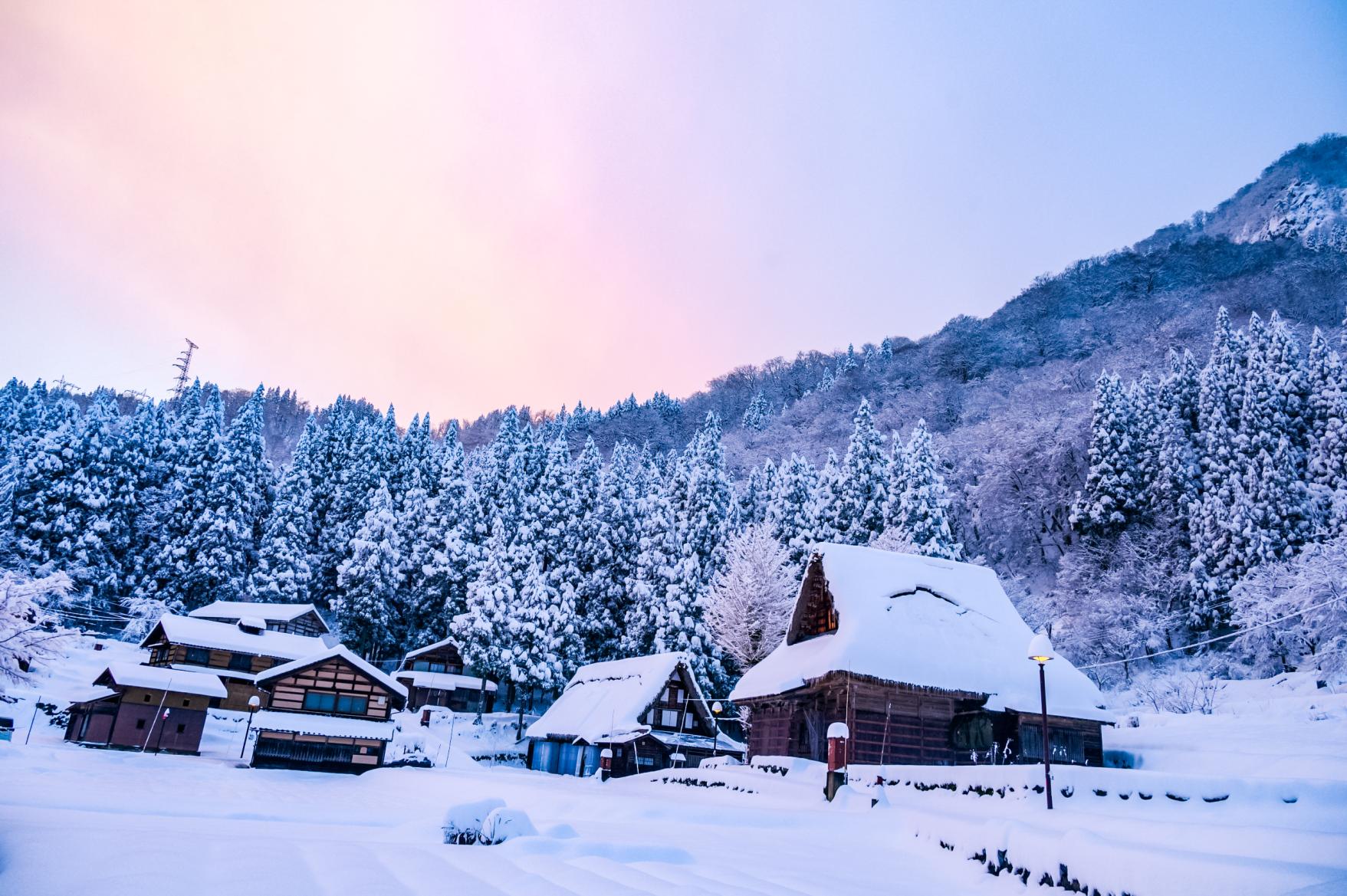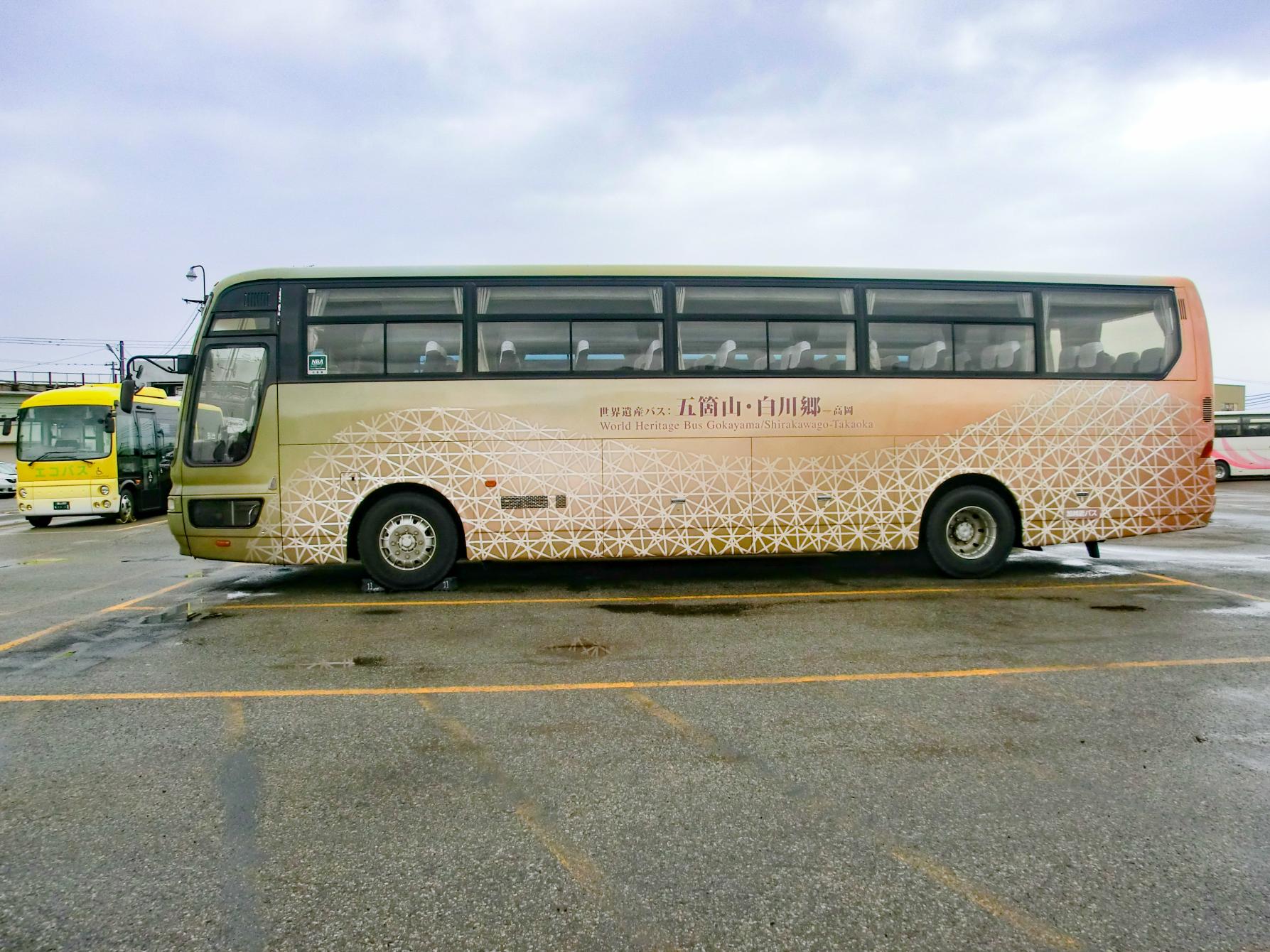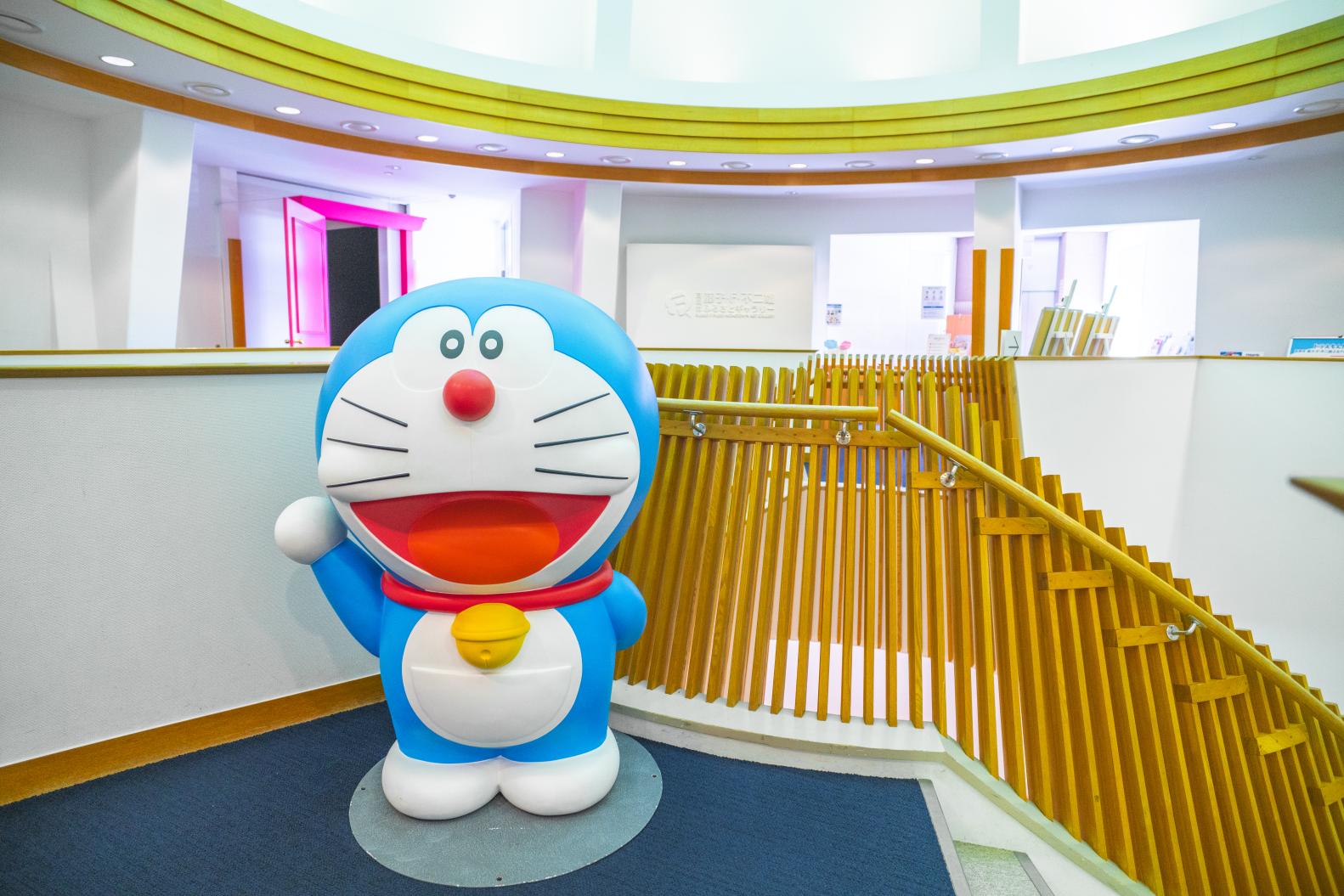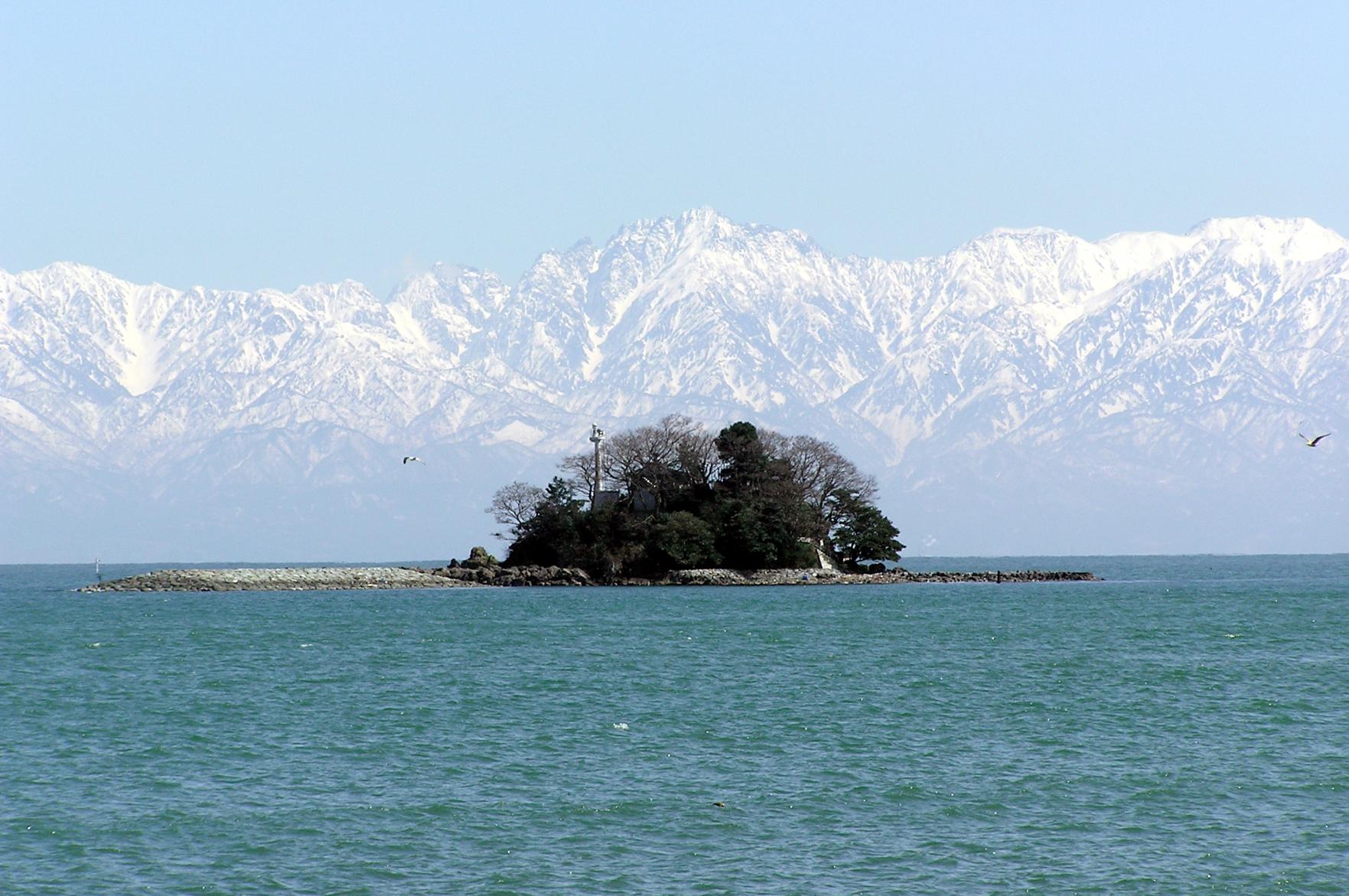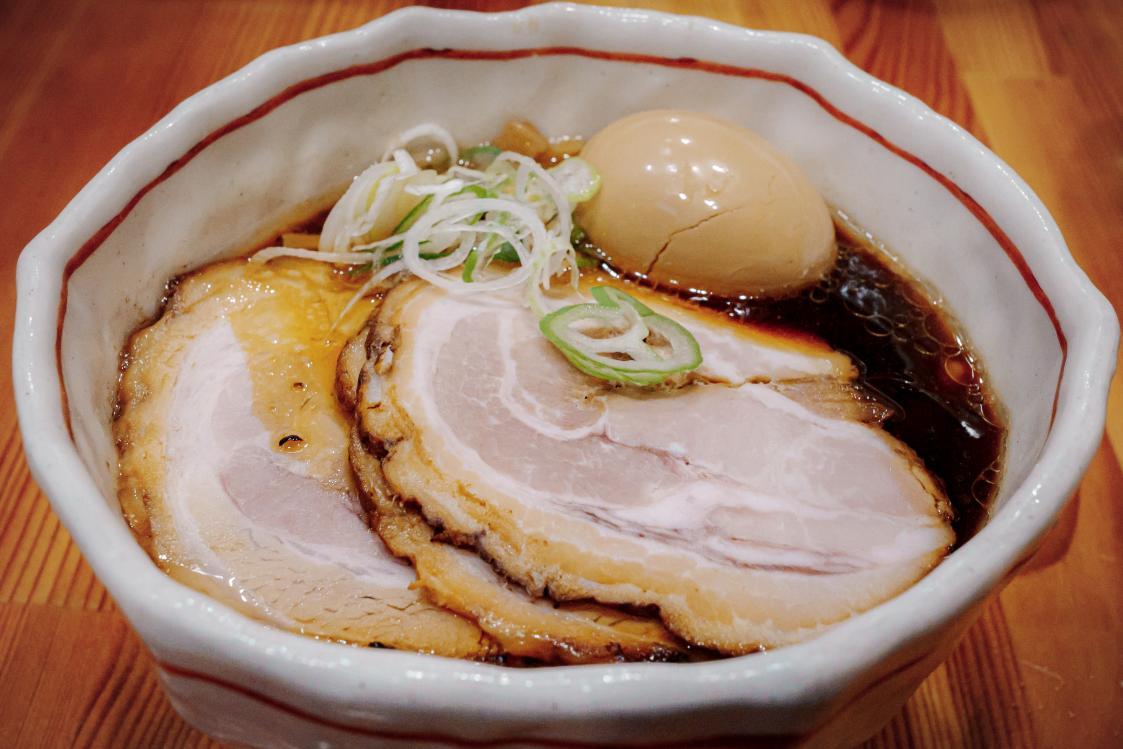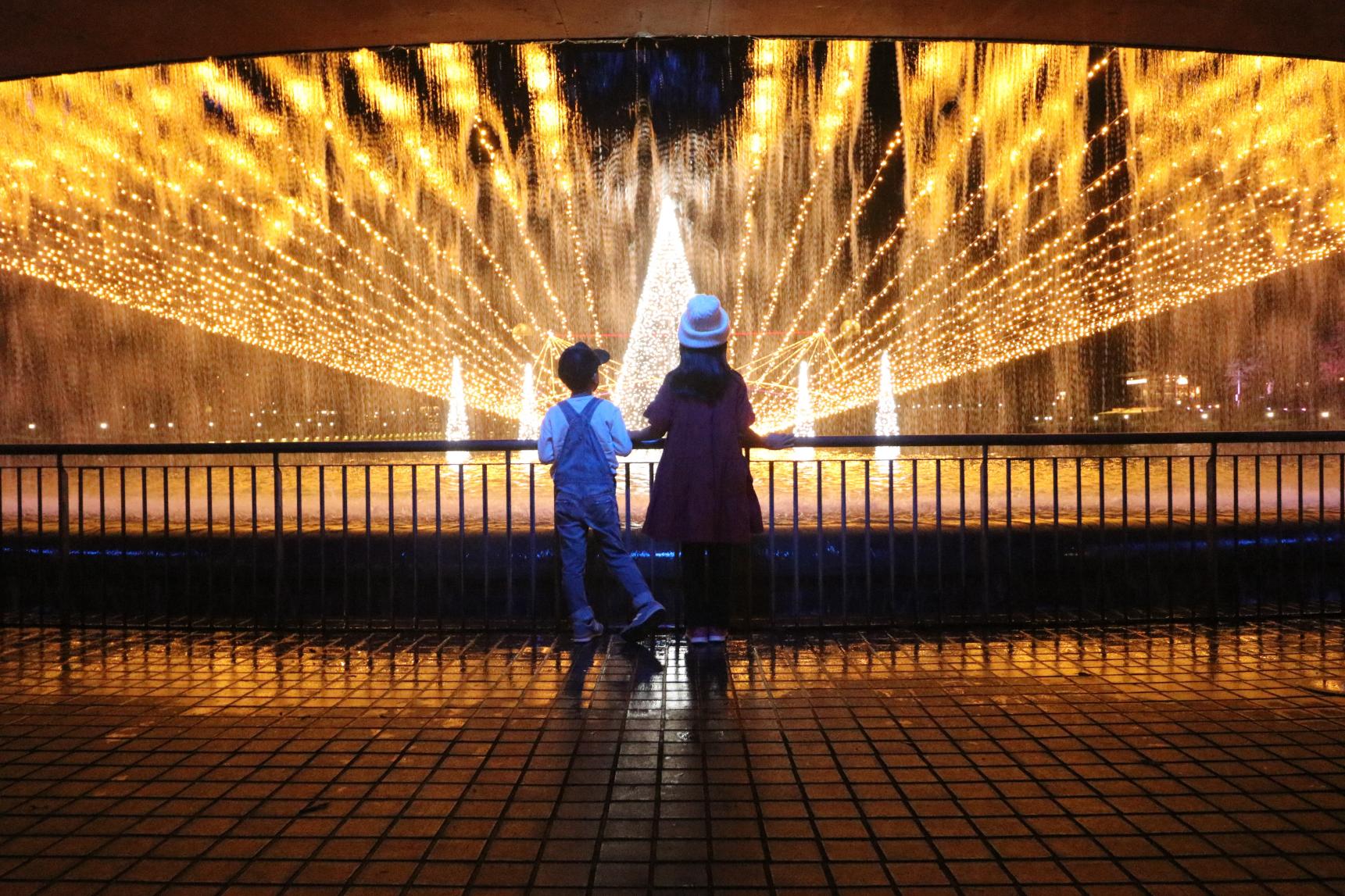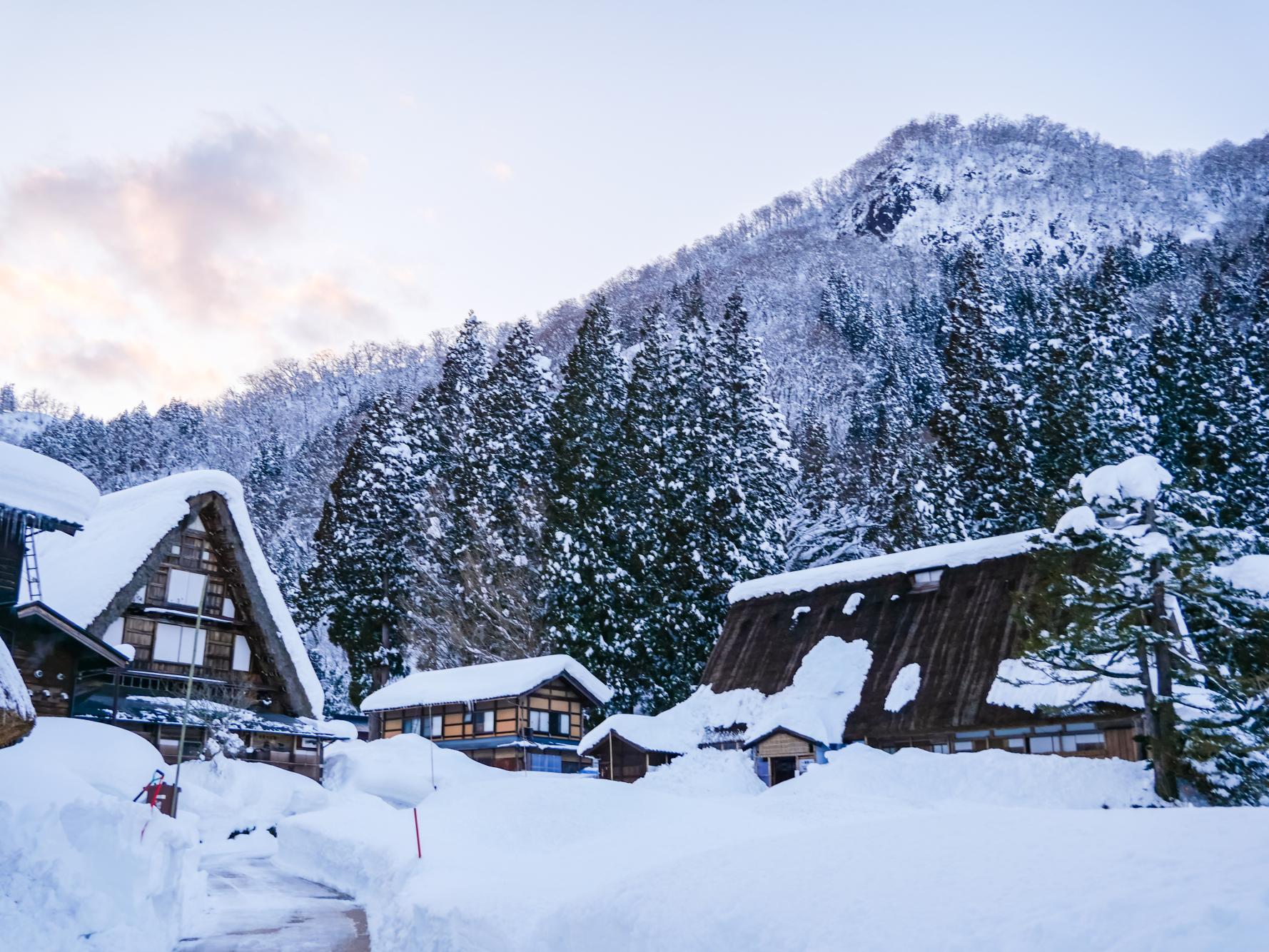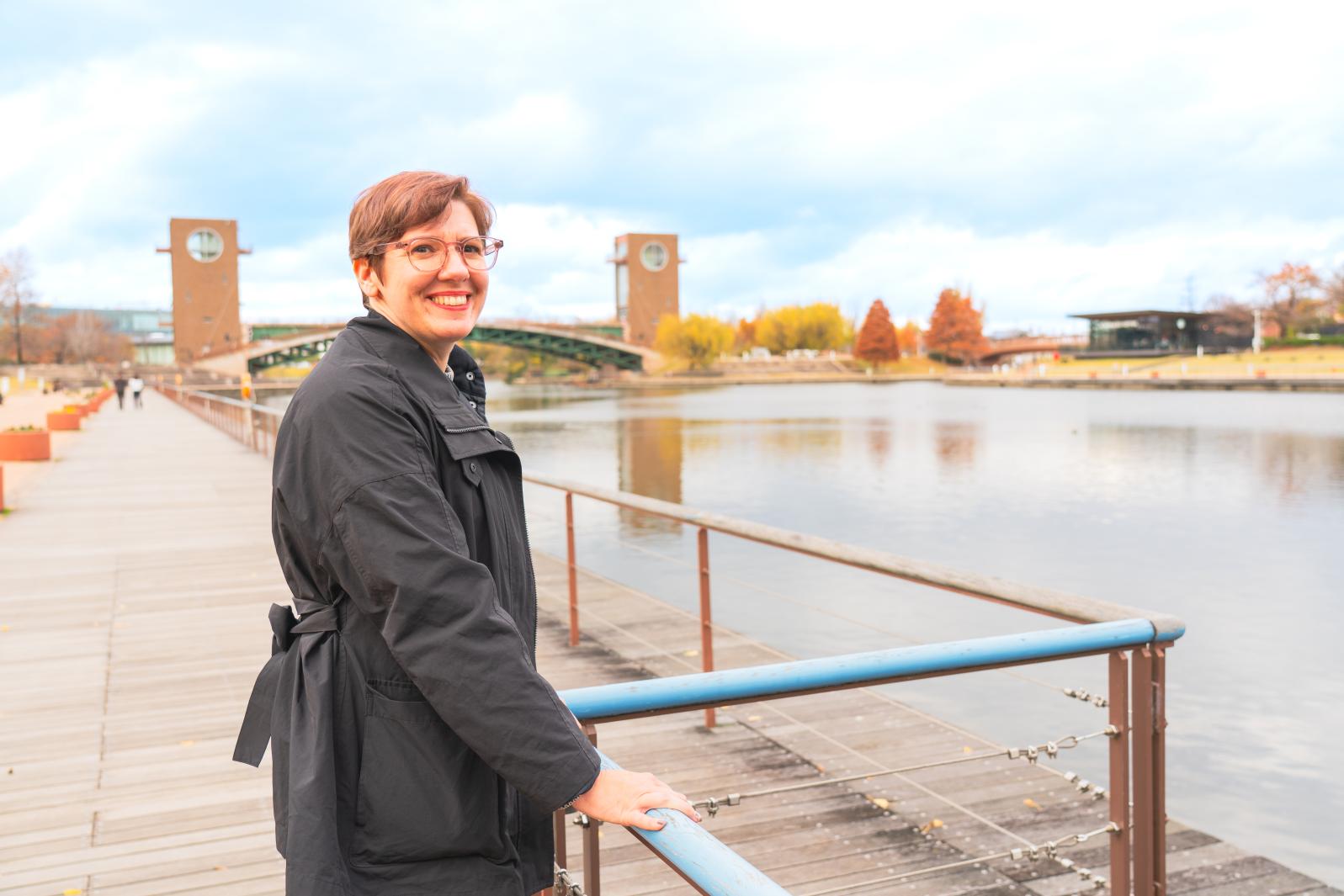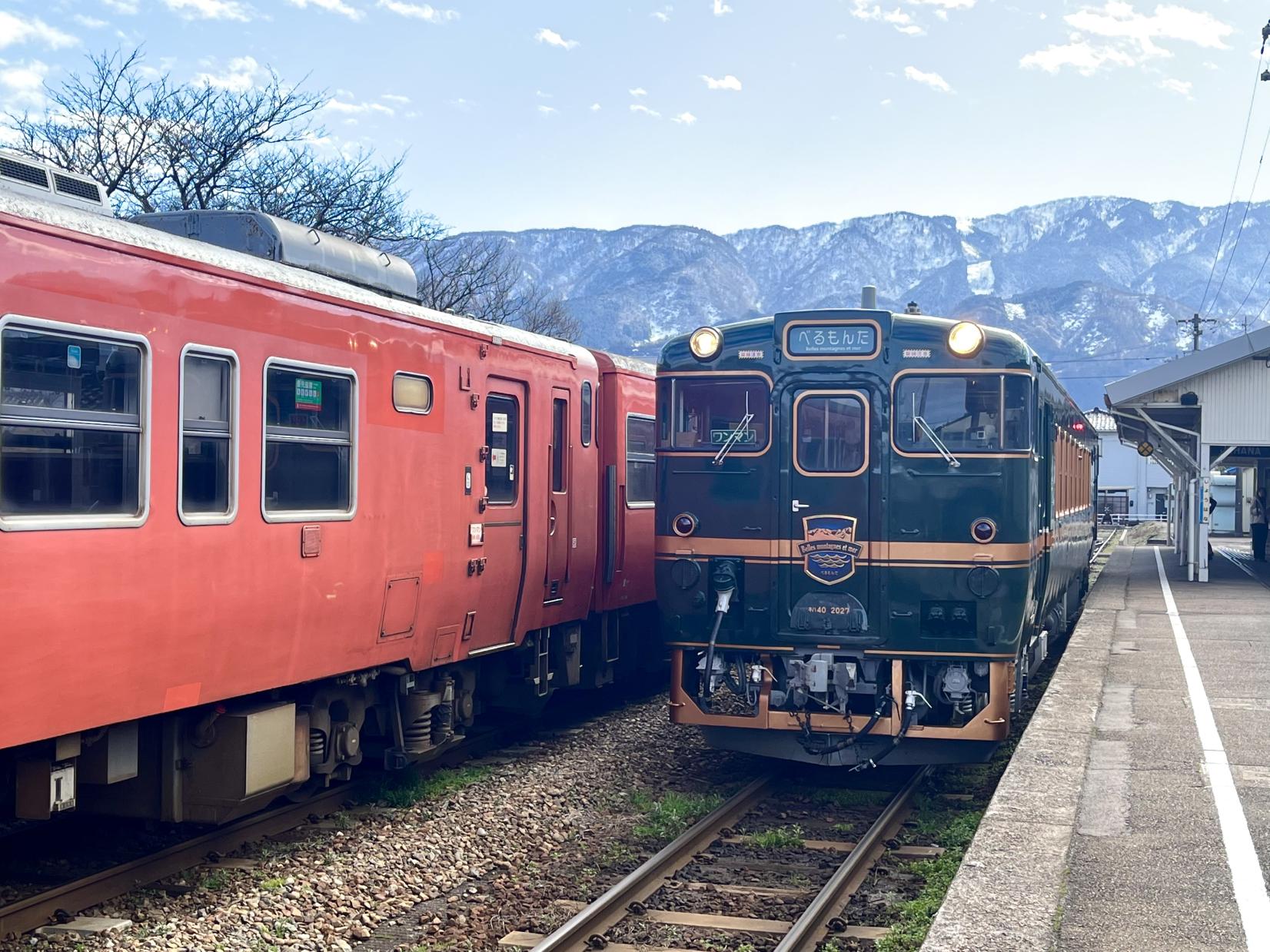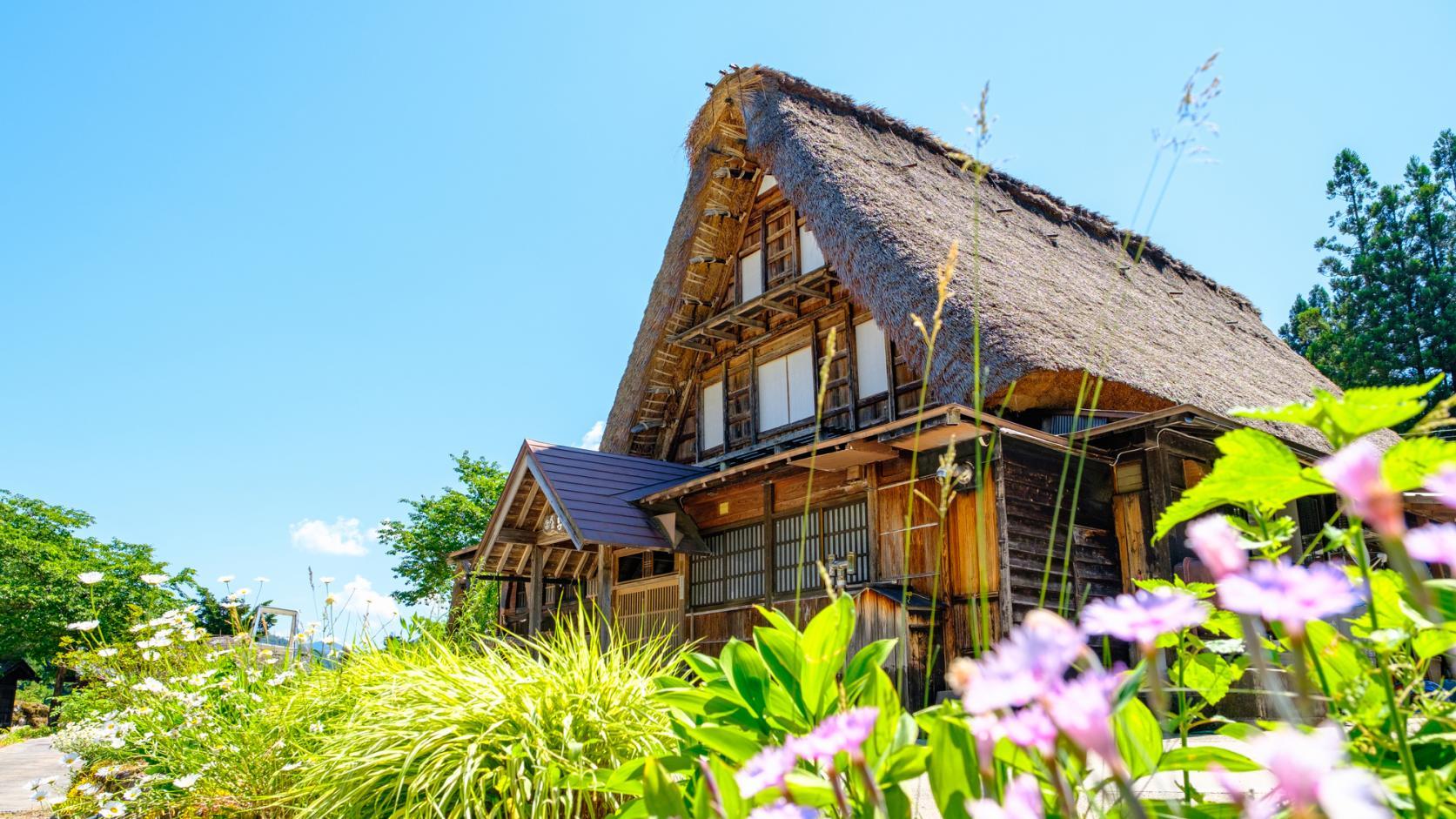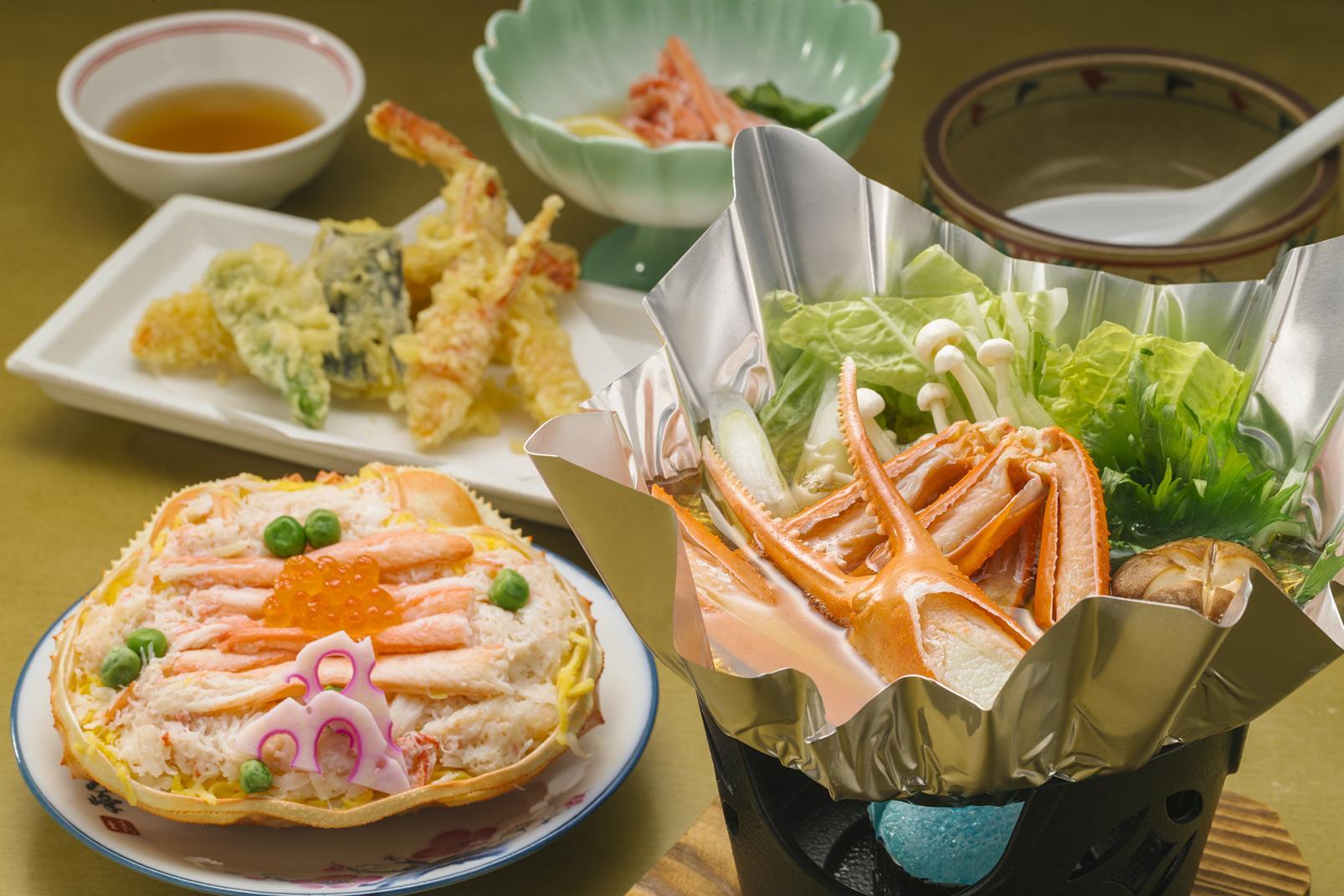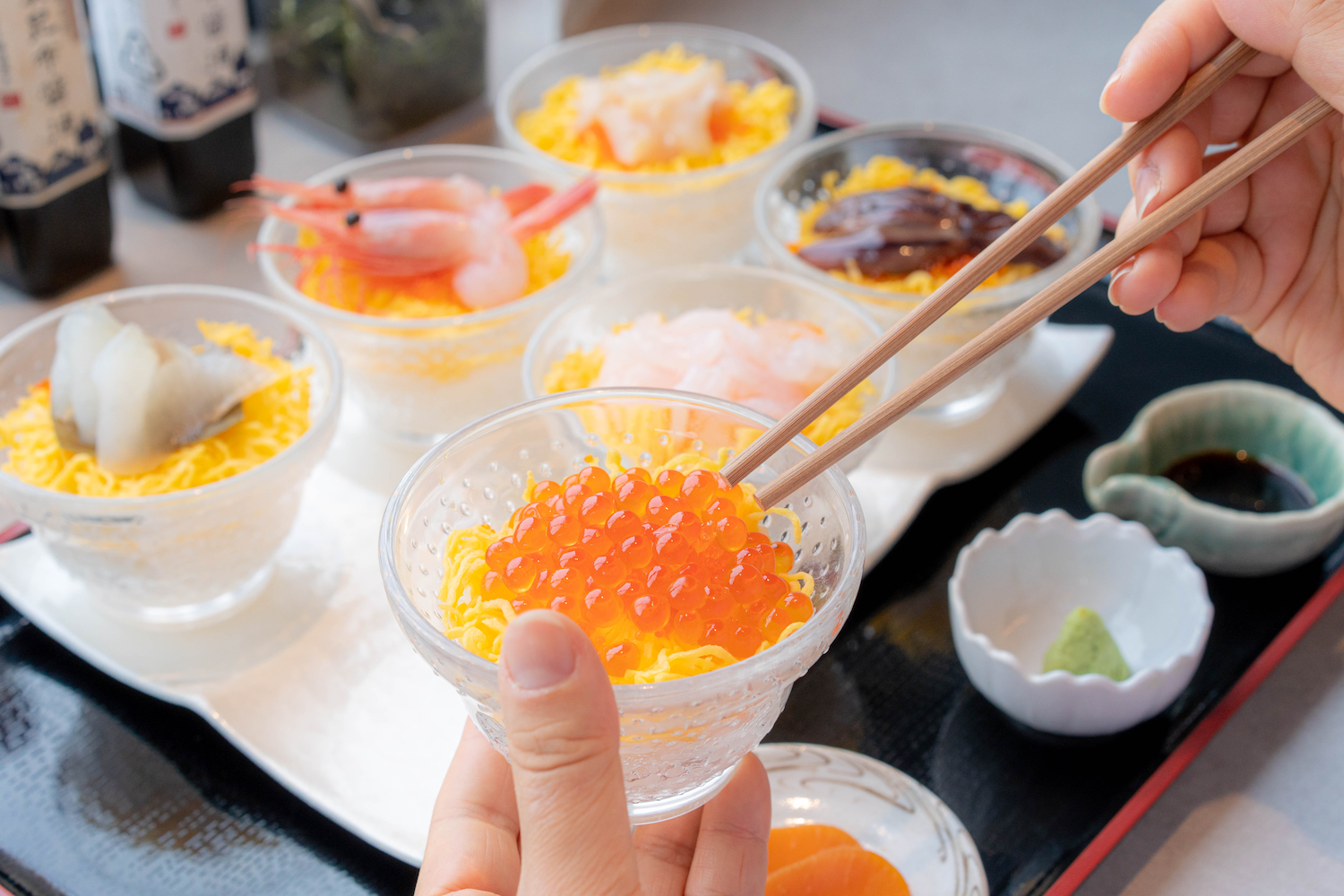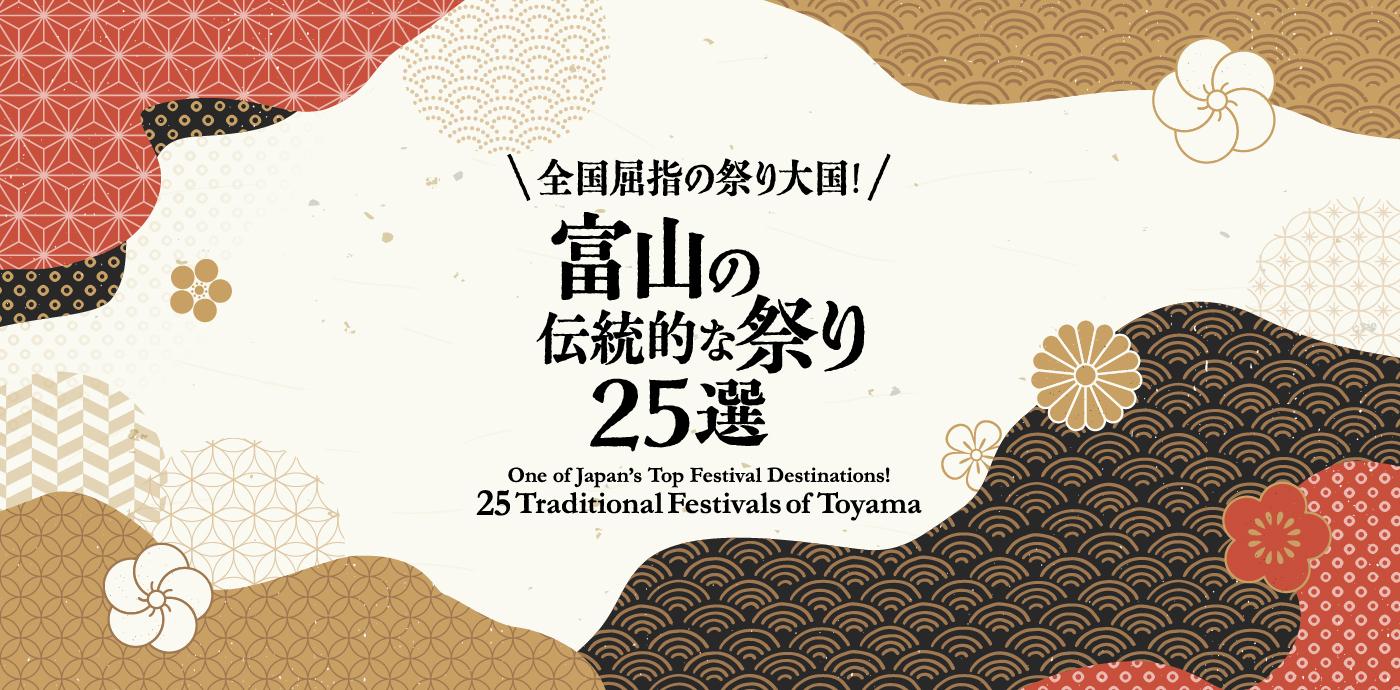
Toyama Prefecture is home to a wide variety of traditional festivals, including Hikiyama (float) festivals, lantern festivals, folk songs, and shishimai (lion dances), all of which have been passed down for generations.
Toyama’s festivals are among the most numerous and diverse in Japan. The prefecture has three festivals registered under UNESCO’s Intangible Cultural Heritage as part of the Yama, Hoko, Yatai Festivals, and more than 1,000 shishimai performances are still practiced across the region.
Another unique characteristic of Toyama’s festivals is that they are not only concentrated in the summer and autumn, like many other Japanese festivals, but also in the spring, particularly around Golden Week.
In this guide, we introduce 25 of Toyama’s most traditional festivals, categorized by type and mapped for easy exploration.
Come and experience the charm of these incredible festivals, which have been cherished and passed down as a source of local pride!
Yama, Hoko-Yatai and Hikiyama Festivals
In addition to the “Mikurumayama event of Takaoka Mikurumayama Festival” in Takaoka City, “Hikiyama event of Johana Shinmeigu Shrine Festival” in Nanto City, and “Uozu no Tatemon event” in Uozu City, which are included in the UNESCO Intangible Cultural Heritage “Yama, Hoko, Yatai events,” many Hikiyama events are held in early spring and summer, such as the “Etchu Yatsuo Hikiyama Festival” in which traditional craft techniques such as metal carving, lacquer craft, and coloring are concentrated. Many Hikiyama events are held from early spring through summer, including the “Ecchu Yatsuo Hikiyama Festival,” which is a concentration of traditional craft techniques such as carving, lacquering, and coloring. In autumn, three Hikiyama festivals, including the Shinminato Hikiyama Festival in Imizu City, are held from September to October.
Andon Festival
This festival, called the "Andon Festival," is held in May and June, when rice planting is over, to pray for a bountiful harvest.There are "Fukuno Yataka Festival" in Nanto City, "Tonami Yataka Festival" and "Shogawa Kanko Festival" in Tonami City, and "Tsuzawa Yataka Andon Festival" in Oyabe City, among others.
*Toyama festivals are full of fights!In the Yataka Festival, the festival's highlight is the violent bumping of floats from each town against each other, although the names of these fights differ depending on the region, such as "yikiwai (fighting)," "tsuchiawase," and "butsuri (clashing).In the Fushiki Hikiyama Festival, there is also a fierce clash of lantern floats called "Kaccha", also known as "Kenka-yama".The charm of the festival may be that you can see expressions of the city of Toyama and its people full of enthusiasm, which you cannot usually feel.
Lion Dance
Toyama Prefecture boasts one of the highest numbers of lion dances in Japan.Even today, more than 1,000 lion dances have been handed down throughout the prefecture.Most of the lion dances in Toyama took root from the end of the Edo period (1603-1868) to the Meiji period (1868-1912), and were performed by local people to pray for regional prosperity and a good harvest.They are often performed during spring and fall festivals, and each region has its own roots, forms, and highlights.Let's experience the charm of the traditions and culture of each region while comparing and contrasting the dances in each area during the season.
Other
Other attractive festivals include the Sanno Festival, a spring festival at Hie Shrine in Toyama City with numerous stalls, and Namerikawa's Nebuta Nagashi, a torch-shaped wooden float called a "nebuta" that is erected on a wooden torch and floated simultaneously over the sea.
Festival Map
The mapping service on this website is based on the free usage limits provided by Google Maps and the Google Maps privacy policy applies.
Note that Google Maps may occasionally not display correctly due to usage limits.
③Fukuno Yotaka Festival/Nanto City
Date: May 1 and 2
Japan UNESCO "Heritage of the Future" Yoimatsuri (evening festival) is held on May 1 and 2.With the call of "Yoiyasa, yoiyasa," "big andon" (lanterns) more than 6 meters high are paraded through the streets, adding to the festive atmosphere.The festival mood is further heightened by the beating of the heroic Yotaka drums, the lighting of red lights on the big andon, and the performance of Yotaka-bushi and Yotaka-dance.The highlight of the festival is the yomono (fighting) that begins around 11:00 p.m. on the 2nd.With a lively clapping sound, the young men break each other's andon (lanterns).The fierce fighting is so powerful that it is a sight to behold.
④Takaoka Mikuriyama Festival / Takaoka City
Date: May 1
The Takaoka Mikuruma-yama Festival is the spring festival of Takaoka Sekino Shrine, and is one of only five festivals in Japan to be designated both a national Important Tangible and Intangible Folk Cultural Property, and is also registered as a UNESCO Intangible Cultural Heritage event.The Takaoka Goshozan is said to have originated in 1588, when Hideyoshi Toyotomi received the Goshozan used to welcome Emperor Goyozei to Juraku-dai, and Lord Toshiie Maeda received it and gave it to the townspeople when Lord Toshinaga Maeda built Takaoka Castle in 1609.Seven gorgeous floats with wheels, railings, nageshi (long handrails), and other parts decorated with the excellent traditional craftsmanship of Takaoka, such as metalwork and lacquer work, parade through the center of the old city with elegant musical accompaniment.The spectacle of all seven floats coming together at noon on the same day is a sight to behold.The beautiful and vivid colors of the floats are a sight to behold, and we hope you will come and see one of the most spectacular floats in Japan!
⑤ Johana Hikiyama Festival/Nanto City
Date: May 5
The Shibata Hikiyama Festival, registered as a UNESCO Intangible Cultural Heritage, boasts a 300-year tradition.The floats, which are the culmination of craftsmanship and are delicately carved and painted, are a spectacular sight to behold.Six floats carrying statues of deities, lion dances, and portable shrines parade through the town.This is the only place in the prefecture that has such an old-style procession to welcome the gods.Each float is led by an elaborate "hermitage float" modeled after the Ichiriki teahouse in Gion, Kyoto, and each float is accompanied by the sounds of flutes and shamisen, and sung to the tune of "hermitage songs" that are unique to the Castle Hill area and are in the tradition of Edo Hata Uta.The beautiful festival attracts people's hearts with its gorgeous mountains and graceful sounds of hermitage.In the evening, the area becomes a lantern mountain, and visitors can enjoy a different atmosphere from that during the daytime.
⑥Fushigi Hikiyama Festival/Takaoka City
Date: 3rd Friday and Saturday in May
This is the spring festival of Fushiki-jinja Shrine, also known as "Kenka-yama," or "fight festival.The floats are transformed into flower floats by day and lantern floats by night, and six floats engage in a dizzying and violent clash called "Kaccha," with the lanterns shaking violently to the accompaniment of Yamaga Nagare-jindaiko drums.As the spring festival of Fushiki Shrine, the god of coastal protection and maritime safety, the Fushiki Hikiyama Matsuri is filled with the spirit of the port town, a fusion of pomp and bravery, and is an important festival that carries tradition and spirit into the present.
⑦Ecchu Yatsuo Hikiyama Festival/Toyama City
Date: May 3
The Hikiyama Festival was a symbol of the prosperity of the Toyama domain during the Edo period (1603-1867), when it served as an imperial household and was a symbol of the culture of the townspeople. The six floats pulled by dignified young men in happi coats are accompanied by the traditional and elegant music of shamisen, flutes, and drums.At night, the floats are lit by more than 1,000 lanterns and parade through the town of Saka, illuminated as if they were floating in the nightscape.The spectacle is just as gorgeous as a nighttime castle, and the festival reaches its climax and continues until late at night.
⑧Iwase Hikiyama Festival / Toyama City
Date: May 17 and 18
The Iwase Hikiyama Festival is held as the spring festival of the Iwase Suwa Shrine, and 11 floats parade through the town in a heroic manner.The highlight of the festival is the "tatemon" decorations on the floats, which each year has a different theme, such as business prosperity or current events.At night, the festival reaches its climax, when the floats collide violently with each other and compare their strength against each other in a pulling contest.This festival has a long history and tradition, and is also known by the nickname "fighting floats" due to the intensity of the pulling contest.
⑨Sanno Festival / Toyama City
Date: June 1 and 2
The Sanno Festival is a spring festival of Hie Shrine held mainly on June 1 and 2.Known as "Sanno-san," it is one of the most popular festivals among Toyama citizens and attracts a crowd of more than 200,000 people!The Sanno Festival has been held since the time of the old feudal clan, and has flourished as the general festival of the entire Toyama castle area.Even today, the area around the shrine is lined with numerous stalls, and various events are held in the pedestrian paradise.Why don't we all get together and go out to have fun?
⑩Shokawa Kanko Festival/Tonami City
Date: 1st Saturday and Sunday in June
The Shogawa Kanko Matsuri (sightseeing festival), which colors the town in festival colors, is a two-day festival where you can experience many festivals at one time.A spectacular light fantasy unfolds with the heroic Yotaka Andon, fireworks dancing in the night sky, torchlight processions, and more.The clashing of the Yotaka Andon lanterns is also very exciting.
⑪Tsuzawa Yotaka Andon Festival / Oyabe City
Date: 1st Friday and Saturday in June
In the Tsuzawa district of Oyabe City, the Tsuzawa Yataka Andon Festival is held to pray for a good harvest and peace.The Yotaka is composed of dengaku (traditional Japanese music and dancing instruments), floats, and hanging ornaments, and some of the largest floats are 7 meters high and over 12 meters long.On the day of the festival, as darkness falls, the dengaku andon lanterns hanging from the eaves of the houses are lit.As if on cue, children dressed in mamashibori potholders and happi coats of "kowaka" (young men) pull the small andon, followed by young men carrying the large andon with the sound of taiko drums and shouts.The highlight of the festival is the "clash," in which two large andon facing each other violently collide with each other to break the other's suspension.This is the moment when the courage and energy of the young people collide, drawing the onlookers into a world of tension and intoxication.
⑫Tonami Yotaka Festival/Tonami City
Date: 2nd Friday and Saturday in June
On the exciting night of the festival, the sight of these gorgeous and gorgeous bright red andon lanterns makes one's heart flutter.The magnificent and tall andon, more than 6 meters high, parade through the town as young people and children call out, "Yoiya-sa, yoiya-sa.The festival mood is further enlivened by the sound of clappers and drums echoing through the streets along with the lively shouts.Tonami's Yataka Festival is said to have started in the Taisho era (1912-1926), and the highlight of this festival, which prays for a bountiful harvest, is the "tsukiai," or collision of large andon (lanterns).The festival reaches its climax with the power of the clash of large andon lanterns.Why don't you come and feel the night of Tonami, where young people's energy is concentrated and full of enthusiasm, with your body?
⑬Namerikawa's Nebuta Nagashi / Namerikawa City
Date: July 31
This is a folk event held on Nakagawara Beach (near the Firefly Squid Museum) in Namerikawa City, and is designated as a nationally important intangible folk cultural asset.A torch-like object called a "nebuta" is erected on a wooden torch and paraded through the town, then lit on the beach and floated simultaneously out to sea from the Nakagawara coast.It is said to be a misogi event to pray for people's good health and safety.The Nebuta event is the southern limit on the Sea of Japan side, and was designated as a National Important Intangible Folk Cultural Property in 1999.
⑭Tatemon Festival / Uozu City
Date: 1st Friday and Saturday in August
The Tatemon Festival, a UNESCO Intangible Cultural Heritage Site, is the pride of Uozu and has continued for more than 300 years.The floats, called "tatemon," which are hung in a triangular shape with more than 90 dike lanterns from a large 16-meter-high pole, are gorgeous and graceful to look at.The total weight of the float is as much as 5 tons.With the help of people dressed in happi (happi kimono) and accompanied by taiko and flute music, the tatemon is pulled from the Uozu coast to the precincts of Suwa Shrine.The dynamic rotation of the tatemon is a powerful dedication! This is a traditional festival to pray for good catches of fish and safe voyages.The hundreds of beautiful lanterns that light up the night sky are a moving sight.The beautiful fireworks display held on the same day as the Tatemon Festival is another summer tradition.
⑮Kokiriko Festival / Nanto City
Opening day: September 25th - September 26th
The sounds of flutes and drums echo through the elegant Hakusan Shrine grounds.Elegant dances are dedicated to the melody.The Kokiriko Festival is one of the most popular festivals in Gokayama, ranking alongside the Mugiya Festival.The entire Kaminashi district comes together to celebrate the festival, with folk songs performed on a special stage in front of the Kokiriko-kan, lion dances, and more.In an event called "Kokiriko So Odori," local people form a circle and dance the Kokiriko with the entire venue.What a surprise!Visitors to the festival can also join in the circle and dance together while clapping the sasara!Come and be a part of the traditional Kokiriko Festival in body and soul.
⑯ Owara Kaze no Bon Festival / Toyama City
Opening day: September 1-3
The "Owara Kaze no Bon Festival" is an emotionally rich dance performed by dancers to the melancholy sounds of shamisen, kokyu (Japanese violin), and taiko drums, and to the accompaniment of tasteful songs.The songs and dances, which have been performed for more than 300 years, are lyrical and graceful, with an elegant elegance amidst the melancholy.The scenery of thousands of Bonbori lanterns lighting up the streets, with houses with lattice doors and storehouses that retain the atmosphere of the old days, is also fantastic.This is one of the most popular festivals in Japan, attracting some 200,000 visitors over the three days.Come and immerse yourself in a world of serenity and elegance.
⑰Ebie Hikiyama Festival / Imizu City
Date:Autumn equinox day
The Ebie Hikiyama Festival is the autumn festival of the Ebie Kamo Shrine. 3 Hikiyama floats are decorated with flowers during the day and lanterns at night, and are pulled around the town while playing elegant Hikiyama music.The pride of Ebie's floats is their "karakuri ningyo" (mechanical dolls).The East Town's "Karakozuri", the Naka Town's "Karakozuri Kakezuke Kaiten", and the Nishi-Town's "Karazaru Doji" are masterpieces by Japan's best puppeteer, Tamaya Shobei VII.Among them, "Karazaru Doji" is a masterpiece of Tamaya Shobei VII, the best puppeteer in Japan, which can walk or run by beating a small drum with 22 silk threads and instantly transforms into Karako or a monkey face.It is worth seeing!
⑱Shinminato Hikiyama Festival/Imizu City
Date: October 1
It is one of the autumn festivals of Houshozu Hachimangu Shrine and is designated by the national government as an important intangible folk cultural property.The 13 floats, the largest number in the prefecture, are arranged into "hana-yama" (flower floats) during the day and "chochin-yama" (lantern floats) at night, and the sight of them being pulled through the town is gorgeous and spectacular.Although the date of foundation is unknown, the Koshinmachi float, which is the largest, was founded in 1650. The heroic sight of the 13 floats in a row, making a sharp turn around a narrow street corner with the distinctive call of "Iyasama, Iyasama" is a must-see attraction.
⑲Daimon Hikiyama Festival / Imizu City
Date: Day before Sports Day
This is the autumn festival of Daimon Shrine and Biwabikubi Shrine, where four floats make a solemn procession through the town.There are various theories about the origin of the festival, but it is said to have been founded around 1872 to encourage people in the midst of anxiety and confusion after the Meiji Restoration, and to wish for the development of the town.When crossing the Shogawa River on the way from Daimon Shrine to Biwabukubi Shrine, the sight of four Hikiyama floats lined up against the majestic Tateyama Mountain Range crossing the Daimon Bridge is spectacular!
⑳Gion Festival / Himi City
Date: July 13 and 14
The "Gion Matsuri" is a festival of two shrines located in the center of the city.The shrine parishioners of Hiyoshi Shrine in the south and those of Himiya Shrine in the north parade with portable shrines and taiko drum stands through their respective neighborhoods.The powerful and gorgeous taiko floats that parade through the town with the call of "Iyasah, Iyasah," heralds the arrival of summer in Himi.
㉑Gongon Festival, Gonggong bell-ringing contest / Himi City
Date: April 17 evening - 18
It is said that the festival originated in the early Edo period (1603-1867), when farmers celebrated the fulfillment of a rain-making ceremony to ward off heavy rains, and joyously rang the bell of Kamihichi Temple.Since then, along with the puja to express gratitude and ward off bad luck, young men who boast of their strength strike a series of bells with a log made from a long live pine tree, hence the name "Gongon Festival.In the "Gongon bell-ringing contest," held as the festival's finale, contestants compete to see how many times they can strike the bell in one minute while carrying a pine log.There are general, women's, and children's divisions, and many people from outside the prefecture participate.Why not participate in this unique festival?
㉒Maru-mage Festival / Himi City
Date: April 17
Led by Hanagasa Doji, followed by taiko drum stands, children, and portable shrines, unmarried women who have been recruited from the general public form a gorgeous procession dressed in Japanese-style marumage and kimono, and parade from the Otabisho to Sente-ji Temple, passing through the central shopping district.Upon arrival at Sente-ji Temple, the procession enters the Kannon-do Temple to pay their respects, and then goes out into the temple grounds for a gomahyoho (Buddhist rite of protection).This "Marumage Festival" is said to have originated when geiko, who wished for a happy marriage, used to tie "marumage," a hairpiece symbolizing a married woman, on an annual holiday and make a wish to the Kannon-sama at Sente-ji Temple (Saiwaicho) in the city.
㉓Gokayama Mugiya Festival / Nanto City
Date: September 23
The dignified dance reflects the dignified spirit of the dancers to a melody tinged with melancholy.Visitors are captivated by the heroic dances that unfold within the elegant shrine grounds.The "Gokayama Mugiya Festival" is an autumn festival held on the grounds of Shimonashi Jishu Shrine in the Hirachi district of Nanto City. The main part of the dance is a song and dance performance of the Mugiya-bushi, which is said to have been sung by the fallen Heike warriors as they harvested wheat, replacing their swords with stags and sickles.After enjoying the dances on stage, a ring dance is performed around the audience seats, where the audience can join in the fun.Come and enjoy to your heart's content this autumn tradition that has been handed down through the generations in the villages of Gokayama.
㉔Johana Mugiya Festival / Nanto City
Dates:September
Autumn is the time when the town of Johata, the little Kyoto of Ecchu, is dyed in the color of Mugiya.The melody of kokyu (Japanese harp) music with a hint of sadness begins to emanate from somewhere, and the heroic dances are performed all over the town.The "Mugiya Odori Competition," in which folk dances are performed by various town and folk song groups on the emotion-filled streets of the town, is held at the ancient temple Zentokuji Temple and the Castlebata Traditional Performing Arts Hall, and attracts great cheers.Enjoy the atmosphere of the town and the dances and performances held at various locations, and enjoy the autumnal atmosphere of Johata to your heart's content.
㉕Toyama lion dance/all area
Toyama Prefecture boasts one of the highest numbers of lion dances in Japan.Even today, more than 1,000 lion dances have been handed down throughout the prefecture.Most of the lion dances in Toyama took root from the end of the Edo period (1603-1868) to the Meiji period (1868-1912), and were performed by local people to pray for regional prosperity and a good harvest.They are often performed during spring and fall festivals, and each region has its own roots, forms, and highlights.Let's experience the charm of the traditions and culture of each region while comparing and contrasting the dances in each area during the season.



